Leaders, opponents, dog pay tribute to


Work continues
Paving began on Tuesday along the section



Paving began on Tuesday along the section
Mark NIELSEN Citizen staff mnielsen@pgcitizen.ca
A judge described a series of “sad and tragic” events in sentencing a former semitruck driver for his role in a collision that cost another man his life.
On the night of Nov. 24, 2016, Robert Nicholas Boyko was already contending with poor weather as he headed east on Highway 16 from Prince George only to see it get even worse as he crested a hill. Instead of snow, he suddenly had to contend with “more of a sleet or slush which made the road very slippery,” B.C. Supreme Court Justice Cassandra Malfair said in her decision.
Even though Boyko was already travelling 20 km/h below the posted 100 km/h speed limit, he attempted to further slow the rig. But his actions did not help.
“Any attempt he made to slow only caused either the tractor or the trailer to lose control and start sliding sideways,” Malfair said. “When he got to the bottom of the hill he again tried to slow the vehicle and I accept he tried several different methods of trying to slow the vehicle without losing control of it. He was unsuccessful.”
The rig jacknifed and collided with a pickup truck driven by Darren Price, who died at the scene.
Boyko subsequently turned in his class one licence and has not driven commercially ever since. He “suffers from nightmares and stress and trauma and continuously remembers or relives the accident in which he was simply just unable to bring his vehicle under control,” it was also noted.
Malfair accepted a joint submisson from

The rig jacknifed and collided with a pickup truck driven by Darren Price, who died at the scene.
Crown and defence counsels and fined Boyko $2,000 and prohibited him from driving for three months for driving at an excessive speed for conditions under the Motor Vehicle Act.
Price’s family was in the courtroom at the time of sentencing and Malfair acknowledged their loss.
“Of course, the death of Mr. Price is very troubling and tragic to this family, and when horrible accidents like this happen we all want to find somebody to blame, but in criminal court we do not really punish results,” she said.
“We have to look at people’s conduct and the badness of their behaviour, the evil of their intentions, the recklessness of their actions, the thoughtlessness of what they did.
“In this case we have a horrible state of very bad winter roads, and Mr. Boyko admits he was going too fast for the conditions, but he was slowed down already, it came on very suddenly, and he tried and his efforts to slow kept getting met with losing control of his vehicle.
“That is what we have to punish him for today, and I am very, very sorry for your loss, but I do not think that the joint submission would bring the administration of justice into disrepute and it is not contrary to the public interest and I will accede to it.”
The sentence was issued in July.
Frank PEEBLES Citizen staff fpeebles@pgcitizen.ca

r since 1916



novative garbage cans.
Three hundred new garbage cans will be rolled out to local curbs in the spring. They are designed to be bear-proof.
If the pilot project works, said Sean LeBrun, the city’s manager of parks and solid waste, more of the cans will be used in the parts of the city with the most bear problems.
“We will work with the Conservation Officer Service and Northern Bear Aware to determine the places where the highest concentration of calls comes from, where the most bear-human conflict occurs,” said LeBrun.
“I think we will focus these household bins one specific area to see if we make a real difference with this new option. Those discussions have already started. We have narrowed some neighbourhoods down but there is still some discussion that needs to happen.”
“You would think, with all the obvious bear populations in and around Prince George, that people by now would be smarter about garbage, but people here are quite careless and something has to be done about it,” said Sgt. Steve Ackles of the region’s conservation service.
“There are no bear problems. There are only human problems. If you take the garbage food source habituation out of the mix, the numbers would plummet,” of bears needing to be destroyed for public protection.
Ackles was an early supporter of the City of Prince George’s interest in these in-
These new can designs should greatly reduce the incidental attractants, said LeBrun, but people would still need to be conscientious about their behaviours. These cans are a proactive way to help that behaviour out.
“They look basically like the garbage cart we currently use. They come from the same supplier, they are just beefier. They are more skookum and there is even a bear pictured right on it,” LeBrun said.
“The best part is, it stays locked, seven days a week. On collection day, you don’t have to unlock it and open up that threat. The mechanism automatically unlocks when it’s inverted or easily opens if you have thumbs.”
The cans are three times as expensive as the conventional garbage carts being used, but saving the life of a bear and/or a human greatly outweighs that factor, said LeBrun.
“We put the same thinking into the bear-proof civic litter containers we have citywide,” he said.
“They cost more money, too, and we started with the areas of greatest concern for bears, on trails and along the rivers first, but gradually we have been covering the city with them. It’s an ongoing issue but we recognize that its important that we have a bear-proof municipal solid waste system because we do live in bear country. If the data supports it, the goal would be to add these cans little by little each year starting with the areas of higher risk and move in gradually to cover the whole city.”



Frank PEEBLES Citizen staff fpeebles@pgcitizen.ca
For those who like to rock, there are some musicals for you and at the top of the heap is Rock of Ages.
This glam metal retrospective is a romp through the hair-band heyday. This isn’t a play that uses the approximate sounds and attitudes of the acidwashed denim of the ’80s and ’90s, it uses the actual songs that dominated the airwaves in that fist-pounding, headbanging era.
Rock of Ages comes to CN Centre on May 10, bringing with it Heaven Isn’t Too Far Away, Don’t Stop Believin’, To Be With You, I Wanna Rock, Nothin’ But A Good Time, Wanted (Dead Or Alive),
Here I Go Again, and a hotshot playlist of power-rock.
The play hits the high notes of Pat Benatar, Quiet Riot, Night Ranger, Damn Yankees, Styx, Starship, Joan Jett, Quarterflash and many more familiar artists.
In addition to the Rock ‘n’ Roll Hall of Fame inductions, Grammy Awards and platinum records garnered by the original artists, this musical theatre production also earned five Tony Award nominations (including best musical, sound, costume, direction and lead actor) and won the Theatre World Award for the acting of original cast member Wesley Taylor. Since it opened in 2009, it has opened the curtain on more than 2,300 performances on Broadway alone. It has also
toured internationally and was made into a 2012 major motion picture with an all-star cast (Bryan Cranston, Catherine Zeta-Jones, Paul Giamatti, Alec Baldwin and many more in support of lead actors Julianne Hough and Diego Boneta).
“It’s 1987 on Hollywood’s Sunset Strip when a small-town girl meets a big city rocker,” said CN Centre general manager Glen Mikkelsen by way of synopsis.
“As they fall in love in L.A.’s most famous rock club, Rock of Ages allows fans to rock out once again to their favorite ’80s hits.”
The Prince George performance happens one night only.
Tickets go on sale Friday at noon (starting at $49.50) at the CN Centre box office or on the TicketsNorth website.
Frank PEEBLES Citizen
staff
One of the region’s rural arts stars is about to come to the city.
Clare Singleton is a devout ruralite, spending the last many years residing in the pass-through highway hamlet of Endako about two hours west of Prince George. She has nonetheless spread her art skills far and wide around the region and will be the centre of the next exhibition opening Thursday at the Rustad Galleria inside the Two Rivers Art Gallery.
Singleton will be on hand in person to talk about the paintings that form Real Northern Living, her collection of vibrant acrylic-on-canvas images that depict the rough and regal lifestyle of the Omineca-Cariboo region.
The opening reception will include an artist’s talk by Singleton, some thoughts provided by Two Rivers Gallery curatorial staff, light refreshments and introductory social viewing of the paintings. The event is free to attend, all ages are welcome, with festivities starting at 7:30 p.m.
The show will hang until Jan. 17.
Citizen staff
With the holiday season getting into full swing, Prince George RCMP will continue to step up its search for impaired drivers after snagging a few over the previous weekend.
Through a series of road blocks and mobile patrols, RCMP said they took four impaired drivers off the road, impounded six vehicles and issued 36 violation tickets.
Additional officers will be out and about again this weekend, the detachment added.
“The Prince George RCMP wants to thank all of those who made the correct choice to get a safe ride home and to those who demonstrated patience during the road blocks,” said Sgt. Matthew LaBelle.
Partiers are urged to plan ahead for a safe ride home, whether it be with a friend, calling a taxi, or programs such as Operation Red Nose, which sees volunteers provide safe rides home for the revelers and their vehicles.
ORN will be on the road this Friday and Saturday nights, from 9 p.m. to 3 a.m., and can be reached by calling 250-962-7433.


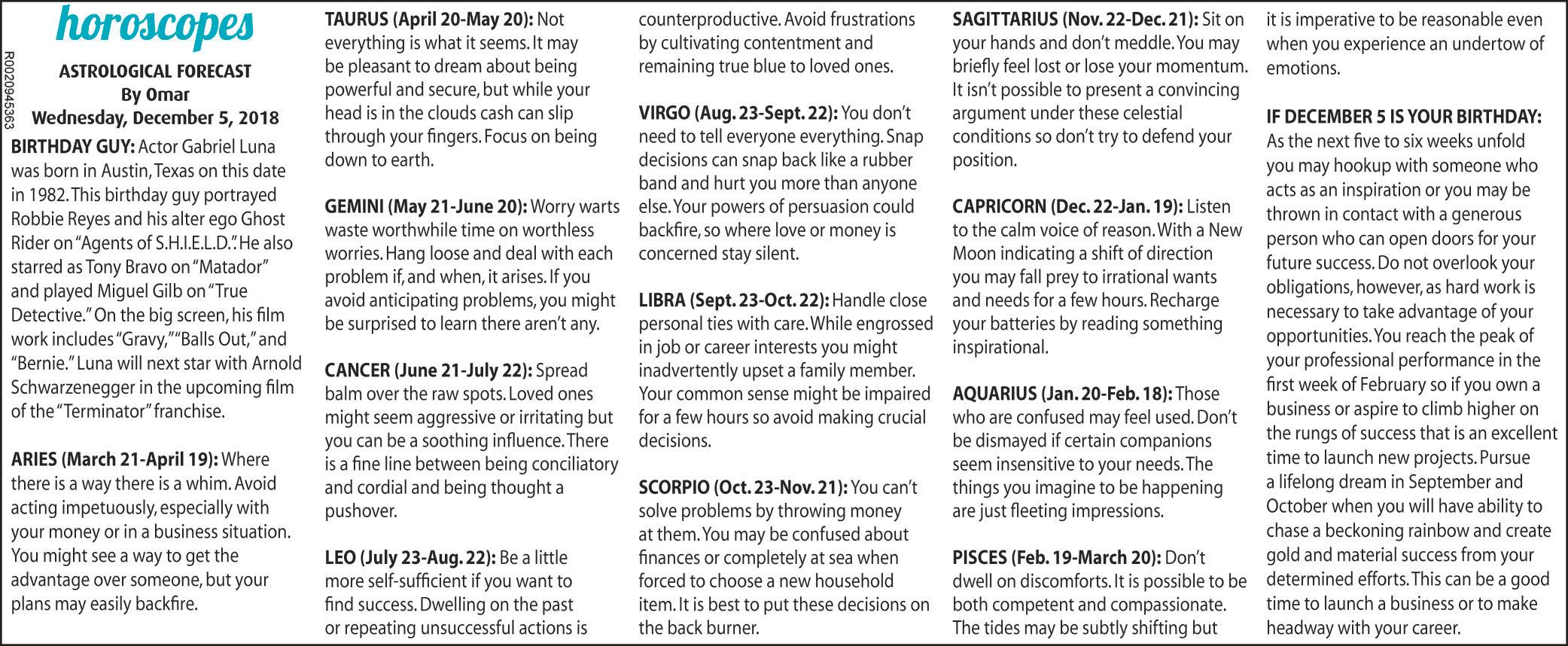

KANE Citizen news service
TOFINO — A British Columbia wildlife refuge says staff are upset and shocked after a bear cub that was rescued near his mother’s dead body this spring died unexpectedly in his enclosure.
The bear named Malcolm was asphyxiated after getting his head stuck in a small rope handle attached to a plastic buoy, the North Island Wildlife Recovery Centre says in a statement on Monday.
“In the morning of his death, he was routinely observed on the cameras playing contentedly on the large tree stumps that had been provided in his cage. In the mid-afternoon, animal care staff were at the pre-release building and opened the food hatch to check on the Malcolm’s activities,” the centre says.
“At that time the cub was seen to be immobile and on the ground beside one of the tree stumps. Staff immediately entered the enclosure recognizing that there was a serious problem. ...There were no signs of a struggle and we suspect he got his head through the loop and then very quickly asphyxiated.”
There has been a buoy suspended by a chain from a tree stump in Malcolm’s enclosure since he was first introduced, it says. The buoys have been a common source of enrichment for bears and there have never been any hints of injuries or mishaps, it adds.
“We feel that it represents a very unfortunate accident involving an extremely rare set of circumstances. Caring for these special animals is an emotionally intense experience and we feel this loss profoundly. However, we will learn from this and be better at what we do,” it says.
Founder and operations manager Robin Campbell said in an interview that the centre has now removed the ropes attached to the buoys from all enclosures. He said in 20 years there had never been an incident like this.
“It’s just a terrible, terrible thing,” he said.
The cub was about eight to 12 weeks old and extremely malnourished when it was discovered in May lying on its mother’s carcass in Tofino.
“There was a lot of drama in saving it,” Campbell said. “Every little step of the way was like a little miracle. So when he finally turned into this wild bear and he was in his home stretch, all he had to do was go into hibernation and then next summer he would have been released.”
The centre’s statement says despite some initial health problems associated with emaciation and hypoglycemia, the bear had shown good physical and behavioural progress while in care.
He was sedated and examined on Oct. 18 and found to be healthy and in very good body condition, so he was moved to a pre-release
enclosure. The enclosure affords lots of space and enrichment and less contact with people, but allows for good CCTV monitoring from several angles, the centre says.
Jennifer Steven and her husband John Forde, co-owners of the Whale Centre in Tofino, spotted the tiny cub in Ross Pass in May and rescued it by scooping it into a dog kennel. Steven said Monday she was “devastated” by the bear’s death but she hoped people would not blame the wildlife refuge.
“It’s sad because so much was put into the effort to save the bear. Accidents happen in life and there’s definitely no hard feelings against the North Island Wildlife Recovery Centre. They did so much to save that cub,” she said.
She and her husband visited the cub a few times at the wildlife refuge and he appeared to be doing great, she said. The refuge also sent them videos showing his growth into a “very large” bear, she said.
There are many animals that would die without the centre, Steven said, and she urged people to support it.
“They did the best that they could and accidents happen. We always learn from accidents like this, and if they can be prevented, great,” she said. “I hope everyone can make a small donation to them because he’s not the only bear there, he’s not the only animal there, and they do such a good job.”
A Prince George man was sentenced Tuesday to a further two months in jail after pleading guilty to secretly recording nudity in a private place.
Because the subject is a member of his extended family, his name cannot be printed under a court-ordered publication ban against information that might identify the victim.
The man had hidden a game camera in the bedroom the victim had been using whenever she stayed at his home. When she found it, she took a photo of it herself and the matter was taken to police.
RCMP subsequently executed a search warrant and along with finding a photo of the girl and a card holding images from the camera, they found a jump drive holding images of child pornography and improperly stored firearms.
For the child pornography, he was sentenced to six months time served and for the firearms charge, he was sentenced to two years probation.
Also, his name will be on the sex offender registry for 10 years and he was issued a 10-year firearms prohibition.
The terms were issued during a hearing in Prince George provincial court.
Citizen staff
The penalty for taking a snowmobile or other off-road vehicle into a protected area has been increased significantly.
Effective immediately, the fine is $575, the provincial government said Tuesday, up from either $230 or $345, depending on the violation. The intent is to better protect environmentally-sensitive habitats and species at risk.
The previous fines “did not reflect the effect” the impact viola-
tors have had on those areas and species, the province said.
Violation tickets may be issued under the Wildlife Act or the Park Act by police, conservation officers, natural resource officers or park rangers.
Court convictions for snowmobiling in southern mountain caribou habitats also may result in a fine up to $200,000 and six months imprisonment, the province added.
Experts have said the practice makes it easier for predators to
Despite experiencing some technical difficulties on its opening night, Operation Red Nose Prince George delivered 126 safe rides home over the weekend.
On Friday, 65 volunteers, including 14 road teams, provided 44 rides and travelled 1,159 kilometres in the process.
On Saturday, 76 volunteers, including 18 road teams, provided 82 rides, travelling 2,433 kilometres.
Red Nose organizers experienced some technical difficulties with their phone lines for the first two hours on Friday night, resulting in clients not being able to reach them from 9 to 11 p.m.
“During that time, we managed to dispatch four rides through our social media channels until the issues were resolved. Teams were busy from 11 p.m. to 3 a.m. providing 40 rides,” said Operation Red Nose spokesperson Andrea Johnson.
“We apologize to those who tried to get through to us early on and we thank everyone for their patience as we worked to fix the issues.
“We did not experience any technical issues on Saturday night as clients reached out to us as soon as the phones were turned on at 9 p.m.”
Operation Red Nose will be back on the road Friday and Saturday.
VANCOUVER — Both sales and prices for Metro Vancouver homes have dropped in what the head of the Real Estate Board of Greater Vancouver says is a return to historical demand levels.
Board president Phil Moore says home buyers have been taking a wait-and-see approach for most of 2018 and the slower activity has prompted home prices to edge downward across all property types.
The board reports just over 1,600 residential home were sold in the region in November, a 42.5 per cent drop from the same month last year and a 34.7 per cent decrease in the 10-year average.
Moore says home prices have dipped four to seven per cent over the last six months depending on the property type and the board will watch conditions in the first quarter of 2019 to see if buyer demand picks up ahead of the usually active spring market.
Citizen staff
The public is invited to provide feedback on proposed changes to fishing regulations for the 2019-2021 Freshwater Fishing Regulations Synopsis.
A complete list and description of the proposed regulations can be viewed at apps.nrs.gov.bc.ca/ pub/ahte.
The proposals include changes to fishing methods, gear, bait, quotas, boundaries and fishery opening and closing dates. These changes are based on regional requirements and conditions, and aim to meet management objectives for native
and invasive fish species, while maintaining sustainable angling opportunities for recreational fishers.
Comments must be received by Jan. 11. After final decisions have been made, the Freshwater Fishing Regulations Synopsis will be posted online in mid-March: www.env.gov.bc.ca/fw/fish/ regulations/#Synopsis Comments will be considered in the final review process. The approved changes will be in effect on April 1. For general information about fishing regulations in B.C., go to www.env.gov.bc.ca/fw/fish/.
hunt the animal by packing down trails into their winter habitat.
“Caribou are considered a species at risk, and protecting caribou habitat ranges is crucial to the survival of the species,” officials said.
“Controlled and limited access to sensitive habitats by off-road vehicles, such as snowmobiles, is the most effective way to protect these areas and wildlife from harmful recreation activities.”
The province has put aside $27 million over three years to establish a caribou recovery program.
Citizen staff
Citing log costs and current lumber market conditions, Conifex Timber Inc. said Friday it will be cutting back production its Fort St. James sawmill starting in the new year.
About 70 employees will be laid off as a result and comes after a two-week curtailment in November.
The curtailment is expected to continue until about mid-2019 and will reduce the company’s B.C. lumber production by 25 per cent.
“Moving to a single line configuration at Fort St. James in Q1 and Q2 lowers cash production costs and helps mitigate the combined impact of fibre supply issues and low lumber prices,” said Conifex chair and CEO Ken Shields in a statment.
“This is a difficult decision but we believe it’s the best option for ongoing sustainability at Fort St. James given current market conditions.
“We will be seeking to mitigate the impacts on our employees as much as possible.”
Conifex expects that a majority of its lumber production will be sourced from the lower-cost U.S. South supply region in the first half of 2019, the company added.


Steven MUFSON Citizen news service
In the daunting math of climate action, individual choices and government policies aren’t adding up.
Solar panels are being nailed to rooftops, colossal wind turbines bestride the plains and oceans, and a million electric vehicles are on U.S. roads – and it isn’t enough. Even if the world did an unlikely series of about-faces – halting deforestation, going vegetarian, paying $50 a ton carbon taxes, boosting energy efficiency, doubling car mileage, and more – it would not be enough.
“There’s no silver bullet,” said Andrew Jones, co-founder of the modeling firm Climate Interactive.
“There’s silver buckshot: many actions in many domains.”
As the 24th UN conference on climate change kicks off this week, a steady drumbeat of scientific reports have sounded warnings about current climate trajectories. One warned of the need to curb global warming to 1.5 degrees Celsius over preindustrial levels instead of the widely accepted target of two degrees Celsius. Another warned of the growing gap between the commitments made at earlier UN conferences and what is needed to steer the planet off its current path to calamitous global warming.
If it sounds downbeat, that’s because it is.
The world has waited so long that preventing disruptive climate change requires action “unprecedented in scale,” the UN Intergovernmental Panel on Climate Change said in an October report.
William Nordhaus, the Yale University professor who just won the Nobel Prize for his work on the economics of climate change, recently described his outlook like this: “I never use the word ‘pessimism’; I always use the word ‘realism,’ but I’d say it’s a kind of dark realism today.”
Climate scientists and policy experts realize that they walk a fine line between jolting consumers and policymakers into action and immobilizing them with paralyzing pessimism about the world’s ability to hit climate targets.
“If you’re driving on a highway and the car in front of you stops short, and you slam on brakes and realize that you’re going to hit the guy no matter what, that’s not the time to take your foot off the brake,” said John Sterman, a professor of management at the Massachusetts Institute of Technology’s business school. “And you certainly don’t step on the gas.”
Sterman said that the world has missed the chance to contain warming without huge disruptions.
“Now, it’s technically possible to do that, but we don’t have the policies in place,” he said.
“That’s discouraging. But that just means we have to redouble our efforts.”
It’s not that corporations and governments haven’t attacked the problem or made breathtaking advances in energy technology. The cost of solar has plunged 78 per cent for utility-scale projects since 2010. Over the same period, the cost of wind electricity fell nearly a quarter; the biggest turbines offshore now have arms weighing roughly 35 tons each that stretch nearly two football fields across.
Even China is making some progress. While its rapidly growing economy keeps emissions rising overall, it is coughing out less carbon dioxide for every unit of economic output.
But effective policy is lacking. Nordhaus advocates a whopping carbon tax, which the Climate Interactive model shows would kill off most coal, sharply reduce driving and boost purchases of more fuel efficient vehicles.
Getting such a carbon tax adopted in the United States, however, is hard to imagine. Washington state voters in November rejected a $15-per-ton carbon “fee” after Big Oil companies poured more than $31 million into the state to block the measure. BP, which had endorsed a $40-per-ton nationwide tax, gave the most to defeat the bill. Congress hasn’t shown any appetite for a carbon tax, either. A proposal to impose a $40-per-ton carbon tax and return the revenue to people in dividends has not caught fire yet.
In France, President Emmanuel Macron has ignited protests by proposing fuel taxes he says are needed to fight climate change.
“One cannot be on Monday for the environment,” Macron said, “and on Tuesday against the increase of fuel prices.”
In an email, Nordhaus said that hitting the two-degree target would require global carbon dioxide prices of about $250 a ton in 2020, and rising rapidly after that.

“This assumes that all major countries are onboard and that economies can handle a large fiscal and trade shock in which energy expenditures rise by about $2 trillion in a few years.”
Nordhaus has blamed the lack of climate policy progress on the strong incentive for what economists call “free-riding.”
“People free-ride when they jump the turnstile on the subway,” he said.
“Nations free-ride in military treaties such as NATO when they enjoy the benefits of the strong U.S. military to protect them while doing little to pay for the common defense.”
And when it comes to climate change, he said, free-riding is “particularly pernicious.”
That’s partly because international organizations lack the authority to enforce rules on wayward nations.
In Poland, several major countries are expected to admit to missing the targets they agreed to at the Paris conference three years ago.
One example is Brazil, whose new President Jair Bolsonaro, the “tropical Trump,” has talked about clearing part of the Amazon for roads and development. That would damage the world’s lungs –the trees that absorb carbon dioxide and pump out oxygen at high rates.
happen, but the average age of coal plants in Asia is just 11 years.
“Most emissions linked to energy infrastructure are already essentially locked-in,” the International Energy Agency said in its November World Energy Outlook.
A project off the coast of Belgium provides a good example of the need to run to stand still.
In November, MHI Vestas, the world’s largest maker of wind turbines, announced it would provide 23 of its new biggest turbines to a project in the Belgian North Sea. The massive turbines can power 137,471 German homes, the company said.
Yet the number of German dwellings grew by 245,000 in 2017.
Royal Dutch Shell chief executive Ben van Beurden noted in 2014 that solar and wind provide about one per cent of the world’s energy.
“How on earth do we think that one per cent is going to become 90 per cent of a system twice as big as what it is by the middle of the century?” he asked.
Given where global emissions are today and the urgency of reducing emissions, we just don’t have time for a system that gradually increases climate ambition every five years – the numbers simply don’t work.
— Nigel Purvis, Climate Advisers
There’s lots of carbon to absorb. The world will need to sustain consumers’ habits and living standards while replacing the energy industry’s massive infrastructure. Every day, the world burns about 100 million barrels, or 15.9 billion litres, of oil – up about two per cent from the year before.
Most of that goes into the gasoline tanks of cars and trucks; there are nearly 270 million on the road in the United States alone.
The average age of those cars is 11.6 years, according to the Transportation Department, meaning that replacing the fleet with more-efficient or electric vehicles would take a long time.
In November, the number of electric vehicles in the United States hit the one million mark. But that was three years later than then-president Barack Obama’s target, first issued in 2009.
And that makes only a small dent in the nation’s greenhouse gas emissions. Thanks to the growth in the car market, in 2016 there were nearly 12 million more cars with internal combustion engines emitting greenhouse gases than there were in 2008.
The math on coal is just as grim. Global coal consumption is running at more than five billion tons annually.
In the United States alone, coal fills 4.4 million rail cars every year. Closing down U.S. and European coal-fired power plants, which are 40 years old on average, could
“Whether you like it or not, it won’t happen.”
Even with large advances in renewable energy, he said, the share of world energy met by oil and gas would decline from 85 per cent to 75 per cent by the middle of the century, a time when the IPCC said net carbon dioxide emissions should drop to zero.
“That might be a gloom-and-doom-type picture,” van Beurden said. “But I think the real challenge is not so much how do we accelerate renewables but more about how do we decarbonize the system we have.”
Yet taking carbon out of the system means coming up with technology – and a carbon price to cover the costs. Companies already know how to take carbon dioxide from the air and stuff it below the earth’s surface. But it’s expensive, and unless it’s used for enhanced oil recovery, it makes no economic sense without a carbon price.
“Like a married couple that has put off saving for the future for too long, at some point it becomes nearly impossible to retire comfortably,” Nigel Purvis, co-founder of the advocacy group Climate Advisers, wrote in 2015.
“Given where global emissions are today and the urgency of reducing emissions, we just don’t have time for a system that gradually increases climate ambition every five years – the numbers simply don’t work.”
On Nov. 27, the UN Environment Program issued a report saying that the gap between countries’ action pledges and the measures to limit warming is getting larger.
While Obama had called the Paris deal “a turning point,” the report says that seven major countries, including the United
States, are falling short of the actions they pledged to take.
The UNEP report also says that after three years of relatively stable emissions, global greenhouse emissions were up 1.2 per cent in 2017.
Purvis now says his views haven’t changed. But, he pleaded, “Don’t cast me as a pessimist.”
He said: “I am an optimist by nature, and I am blown away by progress in certain sectors. If you had told me 10 years ago that wind or solar would be as cheap as they are, I wouldn’t have believed you.”
His assessment hasn’t discouraged people who say that the world needs – and will inevitably develop – a breakthrough technology. They fall into a long tradition of people who place their faith in American inventiveness and know-how.
Microsoft co-founder Bill Gates has invested in Breakthrough Energy Ventures, a $1 billion private investment fund, to fund researchers.
“We need the basic research, but we have to pair that with people willing to fund high-risk breakthrough energy companies,” Gates said in a video on the Breakthrough Energy website.
He said “that’s what gives us the chance of having a solution that really lets us not having to give up energy usage and yet not damage the environment. I am optimistic.”
One of the earliest climate change models was drawn up in 2004 by a pair of Princeton University professors – Robert Socolow, an engineer, and Stephen Pacala, an ecologist. Their 50-year scenario was optimistic: “Humanity already possesses the fundamental scientific, technical and industrial know-how to solve the carbon and climate problem for the next half-century,” they wrote. They said that no breakthrough was necessary.
In their model, a series of “wedges” could alter the trajectory of rising temperatures. The wedges included things such as: scaling up wind capacity tenfold; covering an area the size of New Jersey with solar panels; doubling the fuel efficiency of all cars; tripling the world’s capacity of nuclear power; halting global deforestation; or planting new forests over an area the size of the Lower 48 United States.
“I like to say that we decomposed a heroic challenge into a limited set of monumental tasks,” Socolow wrote later.
In 2011, Socolow wrote that the number of wedges needed had increased from seven to nine. In an interview, he said it is now approaching 10.
Socolow now prefers to call climate action a horse race. At the moment, wind and solar are running ahead faster than expected, while nuclear power and carbon capture are trailing behind.
He says he worries that the two-degree target is setting people up for an inevitable letdown.
“My worry is that people will start talking about game over and a line being crossed over irreparably,” Socolow said.
“Climate change is not like that.”

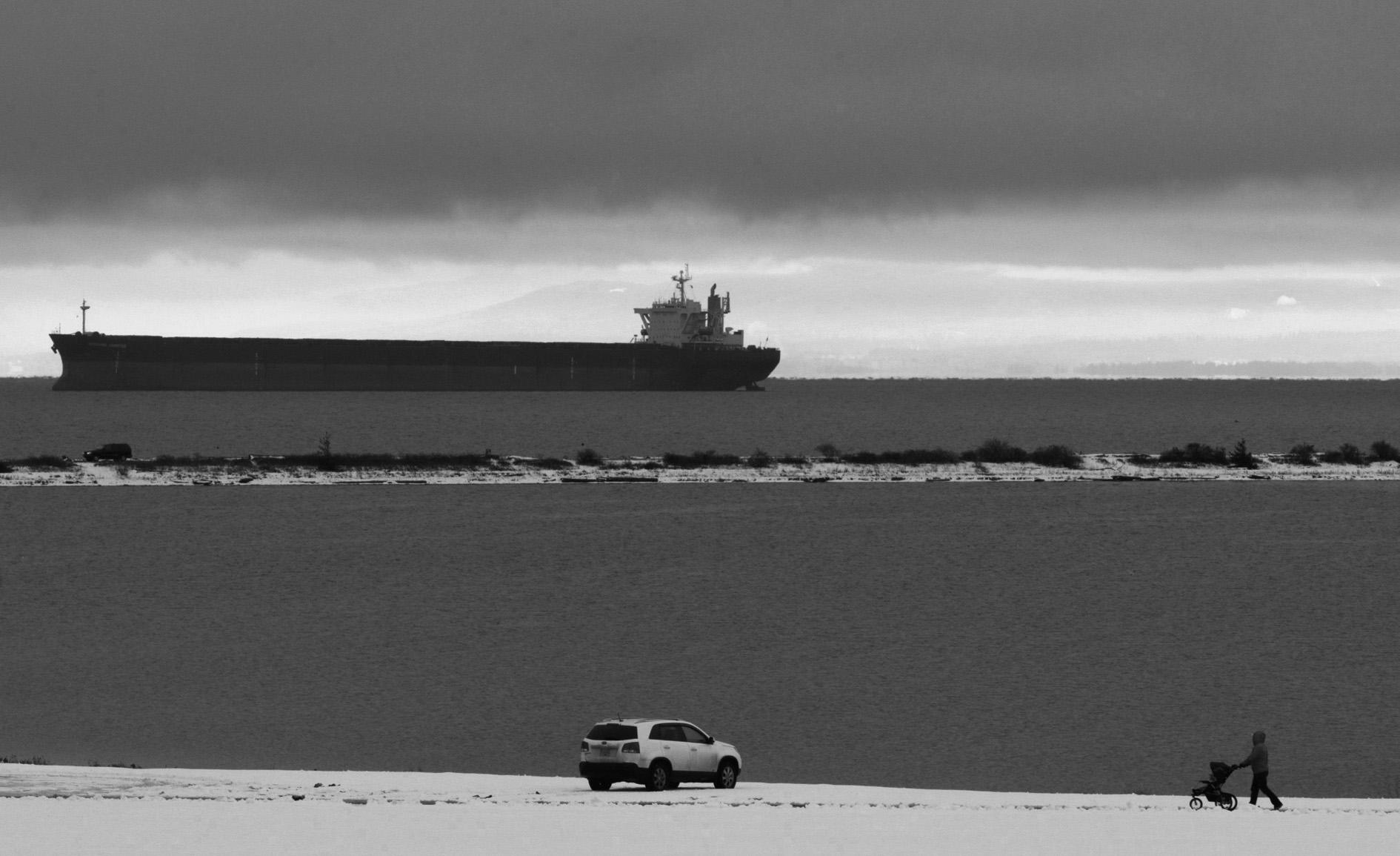
OTTAWA — Leaders from several north-coast B.C. First Nations say if the Senate doesn’t approve a bill barring super-sized oil tankers from the region, their thriving but fragile marine-based economies will die.
The bill is already a sore point between the federal government and Alberta. Indigenous communities also disagree on the ban: nearly three dozen First Nations are behind a $16-billion pipeline proposal that has no future if supertankers can’t carry Fort McMurray oil away from the port in Prince Rupert.
Marilyn Slett, chief of the Heiltsuk Nation and president of the Coastal First Nations alliance of nine B.C. bands, said Tuesday that coastal B.C. nations have been speaking out against tankers in their waters for decades.
“We are salmon people, we are ocean people and our way of life depends on a healthy ecosystem,” she said.
That ecosystem could be destroyed by a single major oil spill, the risk of which she says is significant if massive oil tankers are not legally banned from the narrow passages along the B.C. coast between the north tip of Vancouver Island and the Alaska border.
“If we experienced a major oil spill we
Citizen news service
would be finished,” said Slett.
Garry Reece, the hereditary chief of the Allied Tribes of Lax Kw’alaams, said coastal First Nations have a multimilliondollar marine economy that would be upended if an oil tanker ran aground.
“We can’t afford to let anything happen like having an oil spill,” he said. “All the resources we have in our area would be gone.”
Slett led a delegation of B.C. chiefs to Ottawa this week to lobby senators to pass bill C-48, which would enact into law a voluntary moratorium on major tankers that has been in place since the 1980s. The bill would allow for liquid natural gas to be transported on big tankers through the region, but crude oil and related products could only be carried in amounts less than 12,500 tonnes, or about 90,000 barrels.
Prime Minister Justin Trudeau ordered a ban on supertankers off the north coast of British Columbia just days after being sworn into office in November 2015, though legislation to carry out the order wasn’t introduced until May 2017. Bill C-48 took a year to pass the House of Commons and is now in the Senate, where it is getting a mixed ride.
Last week Conservative Sen. David Wells compared banning supertankers from the northern B.C. coast to prevent
WASHINGTON — Manufacturers, exporters and experts from both sides of the border are meeting in Washington to figure out new ways to cut through the reams of red tape that pose an ever-present risk to Canada-U.S. trade. The high-tech 21st century has them contemplating a fresh challenge: how to prevent that red tape from sticking in the first place.
MISSION (CP) — Police say a newborn baby girl has died in hospital after being found in a dumpster last month in Mission. The RCMP say the infant was found in a dumpster in the Fraser Valley community on Nov. 23. Police say the baby was rushed to hospital and remained in critical condition until she died last Thursday. Police say the cause of death was still being investigated.
The Mounties say a 21-year-old woman was arrested in relation to the incident and released. No charges have been laid.
PITT MEADOWS (CP) — A father in Pitt Meadows says the last thing his family expected to find inside a second-hand board game was a syringe and toxic glue. Mitch Selman says his six-year-old son Angus and two friends opened the game of Mouse Trap after his wife, Paula McMurray, brought it home from a local Value Village thrift shop on Sunday. He says the boy recognized the danger as soon as he pulled the cap off the syringe, so he put the cap back on and took it to show his mother.
McMurray, who Selman says is a nursing student, examined the kids carefully and determined quickly that none had been harmed. Selman says he understands that parents should probably check secondhand toys and games, but adds that it
Joan BRYDEN Citizen news service
OTTAWA — The federal ethics watchdog says he’s concerned that Conservative Leader Andrew Scheer’s office encouraged a Tory MP to violate the conflict-of-interest code for members of the House of Commons.
In a written ruling Tuesday, Mario Dion says Calgary Conservative MP Stephanie Kusie contravened the code last March 29 when she posted on social media a letter she’d sent the ethics commissioner that day asking him to investigate Raj Grewal, who was a Liberal MP at the time.
Kusie was one of two MPs to ask Dion to investigate whether Grewal was in a conflict of interest when he invited a construction company executive – who was paying Grewal for legal services at the time – to official events with Justin Trudeau during the prime minister’s trip to India early this year.
Grewal was kicked out of the Liberal caucus last week amid revelations that he was under police investigation after racking up enormous gambling debts.
Dion says he’s imposing no sanction on Kusie because she posted her ethics complaint on the advice of the Opposition Leader’s Office (the “OLO,” in Parliament Hill jargon).
Indeed, Dion indicates he’s troubled by the cavalier attitude Scheer’s staff took toward a rule meant to prevent disclosure of an ethics complaint against an MP until that MP has been notified.
oil spills to banning cars from highways to prevent accidents.
“We can ensure no one dies on highways by shutting down highways,” he said. “Does that mean we should shut down highways? Of course not. Should we put procedures in place to ensure road safety? Of course.”
He said the ban is just another way Ottawa is “choking off” responsible resource development in this country.
Liberal Senator Jane Cordy, however, is in favour of the bill, noting all it is doing is setting into law a voluntary ban that has been in place since 1985.
Moreover, the concept behind Bill C-48 is similar to the concept behind national parks or marine protected areas, she said Monday.
Slett said her community has already seen what can happen after even a relatively small spill. Her community hasn’t been able to have a clam fishery for two years, after an American-owned tug and barge ran aground in October 2016, spilling about 110,000 litres of diesel.
“It was a matter of minutes before our beaches were contaminated and the damage was done,” she said.
She said if a diesel spill from a sunken barge can cause that much damage and take years to clean up, a major oil spill would be catastrophic.
Treasury Board President Scott Brison and Mick Mulvaney, director of the U.S. Office of Management and Budget, were among those kicking off a two-day meeting of the Regulatory Co-operation Council. The council, founded in 2011 by former prime minister Stephen Harper and former president Barack Obama, is supposed to break down the countless regulatory roadblocks between the two countries.
was irresponsible of Value Village not to inspect its own product before putting it on a shelf and placing consumers at risk.
Value Village did not immediately respond to a request for comment.
It’s bracing for the onset of high-tech breakthroughs like artificial intelligence and battery-powered cars, which are sure to present an unprecedented challenge to efforts to align regulatory standards. Brison says if the two countries can establish standards that are essentially identical, it would streamline the process of reconciling their regulatory demands.
“You expect maybe there’s going to be some pieces missing, but you don’t expect two tubes of sniffing glue and a hypodermic needle. How that would have gotten through any kind of screening process is beyond me,” Selman says.
VANCOUVER (CP) — Dairy cows can be optimistic or pessimistic from a young age and their inherent outlook can predict their ability to cope with stress, new research from the University of British Columbia says.
Benjamin Lecorps, a PhD student in the animal welfare program, said the study has implications for animal welfare and suggests some commonalities between the human and animal worlds.
“In humans, we know that personality traits can really affect how people cope with stress, cope with challenges or even (affect) their social lives and so on. We really wondered if it was applicable to animals as well,” Lecorps said.
The study, published last month in Scientific Reports, tested how calves that had previously been identified as fearful, sociable, pessimistic or optimistic reacted under stressful situations like being transported from one barn to another.
The stress tests came four months after their personality traits had been identified through testing when the animals were between 25 and 50 days old. The more pessimistic calves were more vocal and had higher eye temperatures, which are signs of stress, he said.
Under the code, an MP who requests an ethics investigation is prohibited from making any public comment on the matter until the commissioner confirms that the subject of the inquiry has received a copy of the complaint, or 14 days after the request is made, whichever is earlier.
He says Scheer’s office first gave Kusie’s letter to the National Post, several hours before the commissioner received it, and then urged her to post it on Facebook and Twitter.
“I am concerned that Mrs. Kusie received information and advice from the OLO encouraging her to make public comments once the OLO had made her request public as this clearly prompted her to contravene a provision of the code,” he says.
Dion says Scheer’s office urged Kusie to post her letter, despite knowing that other MPs – including Scheer himself – had previously run afoul of the code by prematurely disclosing their requests for investigations. He notes that in January 2017 the leader had been forced to apologize for public comments about a request for an investigation into Prime Minister Justin Trudeau’s conduct.
Yet, Dion says both Kusie and an aide told him that in their dealings with Scheer’s office on the matter, “they had never been informed of past incidents involving other members but instead were encouraged to post on social media.”
Only after Dion informed Kusie a week later that she might have contravened the code did the leader’s staff mention those past incidents. And even then, Dion says an email to Kusie from her assistant summed up advice from the leader’s office this way: “Staff in OLO did not think that the commissioner’s concerns were ‘a big deal,’ had noted that other members had been ‘similarly reprimanded’ and had sought to obtain approval to ‘leak out the letter (Mrs. Kusie) received confirming that the ethics commissioner is indeed investigating Grewal.’ ”
As well, the leader’s staff proposed getting the National Post to correct its March 29 story to delete a reference to Kusie’s sharing her letter to the ethics commissioner with the newspaper. The Post did update its story on April 5, specifying that it got a copy of the letter from “a Conservative staffer.”
Dion concludes that Kusie’s violation of the code “was an error in judgment made in good faith” and on the advice of the leader’s office and consequently recommends no sanctions be imposed.
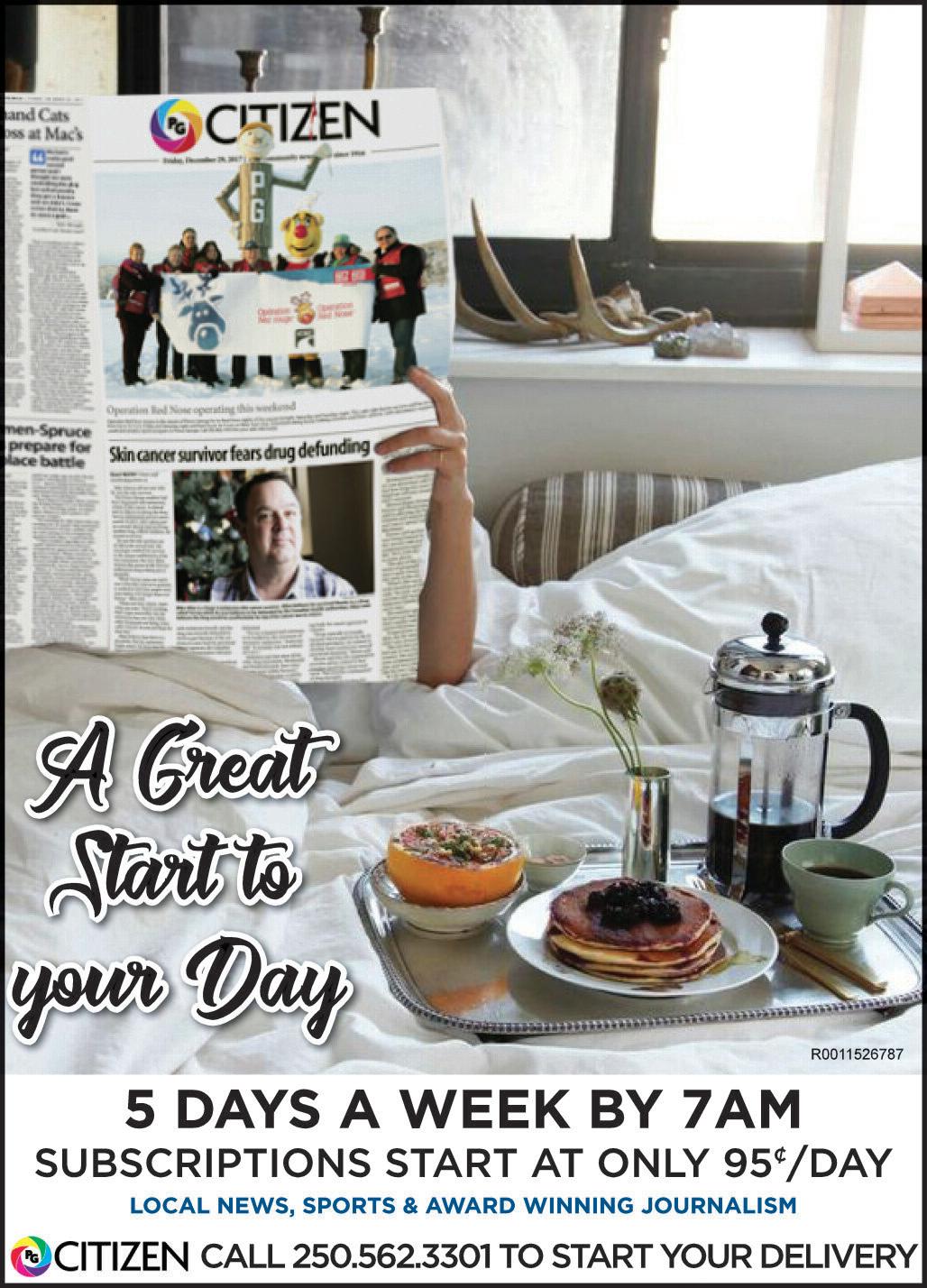
The topic that got me up to the Nov. 20 event in UNBC president Daniel Weeks’ President’s Speaker’s Series”was specified in the official invitation: “with the recent rise in racist rhetoric around the world, campuses across the country have been struggling with a surge in intolerance.”
I was worried that Weeks’ concern about racism and his invitation to participate in “dialogue that addresses the issue of race and inequality in higher education,” was a prelude to another presidential task force like the last one (2014–16) on sexual violence.
That one was a dud, as The Citizen pointed out, after acquiring a copy of the heavily redacted report through the Freedom of Information and Privacy Act.
UNBC explained that the report had been redacted for the usual reasons of privacy, but also because the data it contained was ambivalent and could be interpreted in many ways, some harmful. The Citizen recognized that this was incriminatory: “put another way, the members of the task force decided that they wanted to introduce a policy towards a problem they had no way of knowing really existed at UNBC.”
Was Weeks going to try again, possibly wasting more time and energy and another wad of taxpayers money?
I didn’t find out.
The speech, interesting in itself, seemed irrelevant to the question posed by Weeks.
The speaker was Dr. Alexis Mootoo of the University of South Florida and the title of her speech was “The Tensions of Race in Liberal Places.” By liberal places she meant universities, specifically City University of New York and the University of Sao Paulo in Brazil.
Mootoo didn’t speak of racism per se. This is probably because racism is a matter for psychologists, criminologists and legislators, and Mootoo is a political scientist. A racist person is like a member of the Flat Earth Society or the Church of Scientology. No amount of evidence to the contrary can change their minds. They can’t be educated, only shunned and prevented from getting their hands on power.
Instead Mootoo talked about something called “structural racism.” Presumably that is racism embedded in an institution’s policies. She didn’t provide a definition, but clues to what she meant came from her description of her own experience as an African-American student who was also a single mother. She benefitted from a tuition waiver with full-time employment. She praised affirmative action registration quotas – presumably she benefited from them too. She mentioned that she was an ESL student, so possibly it was affirmative action that got her over the hump of English requirements. She mentioned political correctness (policies involving trigger words, safe spaces and respectful comportment), but she didn’t seem to think it important.
So structural racism is for the most part structural classism and sexism, built-in bias against the poor (African Americans being on average poorer than European Americans) and women (women on average being poorer than men), and the problem is solved by registration and hiring quotas and programs that funnel jobs and money to poorer students.
Surprisingly, there was no discussion of UNBC policies that might discriminate against or help people of colour — the equivalent group at UNBC would, presumably, be First Nations students. This made it hard for the audience to extrapolate from Mootoo’s statistics, interviews and personal narrative.
Only one question from the audience was directed at policy. A faculty member (social work) asked Mootoo what she thought about policy changes aimed at giving students who face difficulties with financing, child rearing, language etc, extra time to complete assignments, courses and theses. The faculty member referred to herself as “white trash” and implied that this class status caused difficulties for her that could have been alleviated by less rigid requirements.
Mootoo advised the questioner to “tell your personal story” as a means of motivating students to “finish in time.” She referred back to her own story, that she’d told in some detail throughout her speech, as an example of how structural racism can be overcome. She said that she worked harder

Often when we hear the news, it’s all just white noise; some places, citizens, crises - and we have our own problems to worry about. So I was caught off guard by General Motors’ choice to close the Oshawa car plant, because I had actually been to the area and spoken with people who would be affected by this decision. Back in 2012, I door-knocked in the Durham riding, which surrounds the Oshawa district on two sides, asking auto workers to vote for Erin O’Toole.
than anyone else in her classes. Otherwise, the only other action that she recommended as a means of easing the effects of structural racism was that students and faculty should constantly ask themselves: “what are you going to do about it [structural racism]?” She said that, in her view, universities were generally lacking in talk about the issue. Her answer, in short, was that motivation is the biggest part of the solution — motivation stimulated by dialogue. You get rid of structural racism by overcoming it personally, and you support one another with motivational talk.
If Mootoo’s speech is any example of how Weeks will conduct his dialogue about race, I doubt that anything will come of it. And that may be a good thing.
Still, one has to wonder why he brought the issue up, just as the Citizen wondered why he instituted a task force on sexual violence that came up with no evidence of the problem. Administrators are usually concerned with calming the water, not deliberately stirring it.
Are Weeks and his faculty merely the victims of, as the clinical psychologist Jordan Peterson would put it, a sort of academic mass hysteria passed on from theorizing faculty (postcolonialists in the humanities, social justice activists in social work, and neo-liberals in economics and political science) who insist that racism must exist because their theories demand it?
— John Harris is a writer and book publisher based in Prince George
Re: Hard lessons from Lemaitre tragedy, Nov. 28 editorial
I note that you have cast back quite a long ways in terms of your article.
I commend you for the insight that you have provided. Might the problem not be with the RCMP oversight – though they are certainly culpable – but the Faustian deal that a person makes for advancement in misrepresenting events.
Eventually you get caught out and your organization throws you under the bus. The RCMP are morally bankrupt and the sergeant played the game. Hardly honourable service. Bill Dunsmore, Prince George
Re: Jack Knox’s column on poorly used words. Can’t for cannot, he’s for he is, it’s for it is, and I’d for I would were all used.
Just plain lazy, I think.
One that is also seen more and more but not in Jack’s column is “cheap,” instead of inexpensive or low cost. Cheap in my mind means poor quality or shoddy.
John Warner, Prince George
LETTERS WELCOME: The Prince George Citizen welcomes letters to the editor from our readers. Submissions should be sent by email to: letters@ pgcitizen.ca. Maximum length is 750 words and writers are limited to one submission every week. We will edit letters only to ensure clarity, good taste, for legal reasons, and occasionally for length. Although we will not include your address and telephone number in the paper, we need both for verification purposes. Unsigned or handwritten letters will not be published.


Walking the streets and meeting the locals left an impression on me. I have no personal connection to the manufacturing side of our Canadian heritage, let alone the old stock Ontarian worldview found in the several counties surrounding Toronto. But as we finished poll after poll, I began to understand there was actually slightly more to our country than the Western resource extraction I grew up with and the various daily agendas of the CBC we are collectively force fed. It bears clarification that thanks to the decline in “muscular labour” and manufacturing jobs, many people my age only know late industrial landscapes and characters from TV and film, most notably Roseanne or Rocky. Yet there I was, in Canada’s heartland, meeting families who had lived in their neighbourhoods for generations, many of which worked for the same big local employer in what used to be praised as “real jobs” by the Archie Bunker crowd.

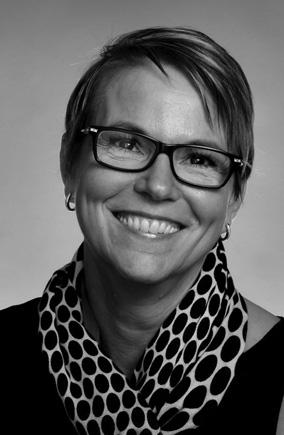

Of course that’s the catch – the jobs weren’t real or sustainable, though I didn’t know that then. Pundits have waxed across the country that both the politicians and the proletariat should have known better – subsidies and bailouts were always going to end with a shuttered factory. I can’t bring myself to be that callous, particularly because unlike an auto worker, I have a job that can’t be offshored. Besides, I met these people. They certainly don’t deserve this fate. People vs. profits is an eternal struggle on the right. Manchester Liberalism is not a kind ally to Burkean Conservatism: one prizes the bottom line, the other exalts the common good. By the divination of GM’s accountants, the Oshawa plant no longer pays but on the ground, the devastation to real people and their communities is beyond calculation. It is this great divorce between the decid-
ers and the affected that gave rise to the populist tidal wave around the globe.
Politicians have a variety of tools to soften the blow or to make GM feel their anger. But what’s at stake is something more fundamental - the dignity of workers and their labour. What will replace the car plant as the primary employer in the area will be directly linked to the health of that community; case in point, the opioid crisis in America’s Rust Belt is the direct result of the lack of purpose felt by workers, particularly men, due to job losses and underemployment.
Some younger workers will be able to retrain into new industries with government help but it is likely these new jobs will be fly-in/ fly-out, changing working class neighbourhoods into bedroom communities or relocating families to suburbia. As for older workers, they are likely doomed to live out
globalization’s grand conclusion, as the old tune goes: “O Big Boxmart, what have you sold to me? We used to be your customers, now we’re your employees!” Horrifying.
Profits have won over people, possibly creating a more stratified society. But it also must be stated that the red tape from Ottawa, the squabbling provinces, and the increasing costs of administration in every sector are hurting frontline workers as well. Many argue these issues are too big to solve, but I suspect those in charge don’t care because they don’t suffer the brunt of it.
There are no simple solutions. Yet if ever there was a common cause for many factions, the economic issues we face today are likely the key. The Deplorables down south were just average people who wouldn’t take it anymore – does that sound like any Canadians you know?


Citizen news service
They came together Tuesday from worlds that can often seem so far apart, current and former elected officials, intelligence chiefs and foreign dignitaries standing alongside suit-clad federal workers, college students and other everyday Americans. They came together to bid farewell to George H.W. Bush, the patrician former president who dedicated years to public service.
Throngs of people streamed into the Capitol Rotunda for a quiet moment seeing Bush’s flag-draped coffin as he lies in state. Those who gathered included Bush’s relatives, people who served under him while he was commander in chief and onetime political rivals, including Bob Dole, the former Senate majority leader and Republican nominee for president.
Dole, who had twice competed with Bush for the Republican nomination, approached the casket in a wheelchair. An aide helped him stand briefly before Bush’s body. With his left hand, Dole gave a salute to Bush, who like him had been veteran of the Second World War.
Jeb Bush, the late president’s son, posted on Twitter of the moment: “Just incredible.
Thank you Senator Dole.”
Bush died last week in Texas and will lie in state at the Capitol Rotunda until Wednesday morning. His body was brought to the Capitol on Monday to begin days of tributes in Washington and Texas, which will include a national day of mourning and a state funeral Wednesday.
A parade of prominent names also came Tuesday to bid farewell to the 41st president, their appearances reflecting chapters from his remarkable resume. Colin Powell, who Bush named as his chairman of the Joint Chiefs of Staff, came along with generals who served during the 1991 Persian Gulf War under Bush. Gina Haspel, the CIA director, approached with John Brennan and others who had similarly followed in Bush’s footsteps in leading the agency.
Members of Congress, where Bush served four years, trickled in and out, as did staffers for the Republican National Committee, which Bush once chaired. Former Secret Service directors came through, as did South Korea’s foreign minister and Kuwait’s former prime minister.
More recent additions to Bush’s life appeared. Sully, the steadfast service dog who accompanied Bush in the final months of his life and was the subject of a viral photograph tweeted by the former president’s spokesman, briefly took a spot in the Rotunda.
When a former president dies, the public mourning process offered by having them lie in state gives the American public a chance to say farewell. Bush is the 12th president to lie in state at the Capitol, a tradition that dates back to Abraham Lincoln
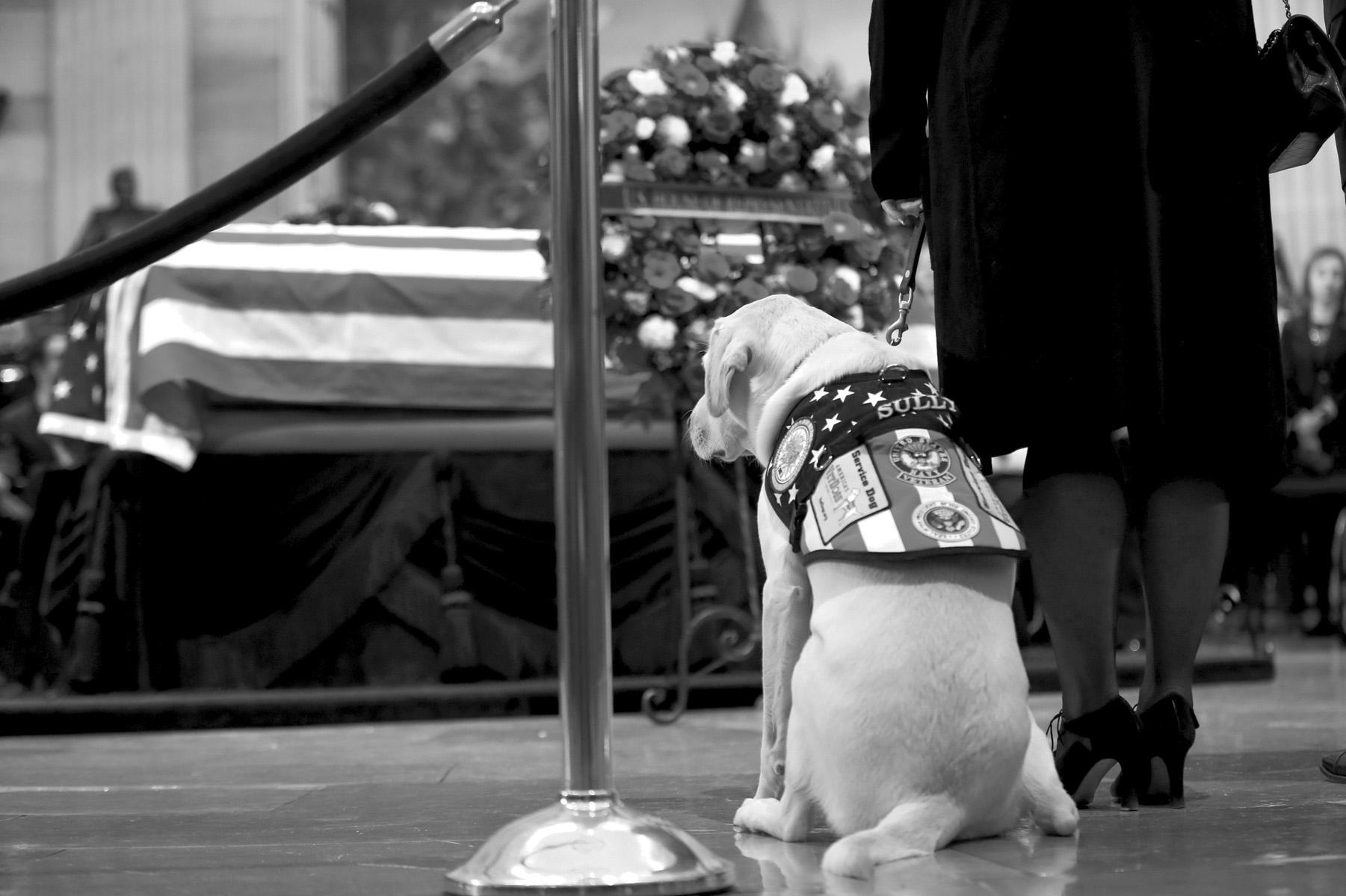
in April 1865, although not every president has been honoured that way.
The first person memorialized this way was Henry Clay, a former senator and speaker of the House, in 1852, according to the House of Representatives. In recent years, the honor has also been given to senators Daniel Inouye and John McCain.
The tradition offers a brief period of stillness in an unsettled time, a ritual that crystallizes the moment when the country formally mourns and says goodbye. There have not been many presidents in the nation’s relatively young history, and Bush’s death leaves just four living former presidents as well as President Donald Trump.
Before Bush, the last presidents to lie in state were Ronald Reagan – for whom Bush served as vice president – in 2004 and, a little more than two years later, Gerald Ford, who also was a Second World War veteran, congressman and vice president

before serving as president. Statues of both men adorn the Rotunda that now holds Bush’s body.
As they did when those men were remembered, crowds of Americans came to the Capitol on Tuesday with clasped hands, sombre expressions and some tears. Mourners began heading inside well before
RIGHT: Former Sen. Bob Dole rises to his feet from his wheelchair with the help of an aide to salute Bush’s flag-draped casket. Citizen news service
Thousands of emails were stolen from aides to the National Republican Congressional Committee during the 2018 midterm campaign, a major breach exposing vulnerabilities that have kept cybersecurity experts on edge since the 2016 presidential race.
The email accounts were compromised during a series of intrusions that had been spread over several months and discovered in April, a person familiar with the matter told The Associated Press. At least four different party aides had their emails surveilled by hackers, said the person, who was not authorized to discuss the details publicly and spoke on condition of anonymity.
The committee said an “unknown entity” was behind the hack but provided few other details. A cybersecurity firm and the FBI have been investigating the matter, the committee said. The FBI declined to comment.
Politically motivated cyberespionage is commonplace across the world, but Americans have become particularly alert to the possibility of digital interference since Russia’s meddling in the 2016 election. The theft of Democrats’ emails is still fresh in the minds of many political operatives
and lawmakers, who have stepped up defensive measures but still struggle to protect themselves.
Foreign spies routinely try to hack into politicians’ emails to gain insight, ferret out weaknesses and win a diplomatic edge. But hackers often launch sweeping spear-phishing campaigns to gain access to a variety accounts – with no political motivation. With no immediate suspects and few technical details, it’s unclear what the significance of this latest incursion is.
In August, the Democratic National Committee thought it had thwarted an attempt to break into its massive voter database – but the effort turned out to be unauthorized test that mimicked what an attack would look like.
CrowdStrike, a California-based cybersecurity company, said Tuesday the NRCC asked the company in April to “perform an investigation related to unauthorized access” to the committee’s emails. Before that, the company had been helping the committee protect its internal corporate network, which wasn’t compromised.
“The cybersecurity of the committee’s data is paramount, and upon learning of the intrusion, the NRCC immediately launched an internal investigation and notified the FBI, which is now investigat-
ing the matter,” the committee said in a statement. The hack was first reported by Politico.
Earlier this year, NRCC chairman Steve Stivers said the committee – which raises money to support Republican candidates for the House – hired multiple cybersecurity staffers to work with its candidates and promised to do more.
“We’re starting to advise campaigns, but we’re not ready to roll the whole thing out. We’re working on it,” Stivers said in March. “We’re working on the technologybased stuff to try and make sure that we know what’s out there – which is hard, too – and then we try to defend against it the best we can.”
During the 2016 presidential campaign, Russian state-aligned hackers organized the leak of more than 150,000 emails stolen from more than a dozen Democrats. The FBI later said that the Russians had targeted more than 300 people affiliated with the Hillary Clinton campaign and other Democratic institutions over the course of the presidential contest.
Special counsel Robert Mueller is now investigating the whether people close to Donald Trump’s presidential campaign had advance knowledge of WikiLeaks’ plans.
Citizen news service
Britain’s Parliament dealt Prime Minister Theresa May’s government two bruising defeats Tuesday, and that was before lawmakers began an epic debate that will decide the fate of May’s European Union divorce deal and her political career.
Opening five days of debate on the Brexit agreement, May said that since the British people voted in 2016 to leave the EU, it was the “duty of this Parliament to deliver on the result” of the referendum. Minutes before May rose to speak, lawmakers delivered a historic rebuke, finding her Conservative government in contempt of Parliament for refusing to publish the advice it had received from the country’s
top law officer about the Brexit deal. The reprimand, while largely symbolic, marks the first time a British government has been found in contempt. The 311293 vote demonstrated the fragility of May’s government, which does not have a majority in Parliament. In another sign of the government’s weakness, lawmakers also passed an amendment giving Parliament more say over the government’s next steps if the assembly rejects the divorce deal in a Dec. 11 vote. The deal, endorsed last month by the 27 other EU leaders, lays out the terms of Britain’s departure from the bloc and sets the framework for future relations with the EU. Rejecting it would leave the prospect of a chaotic “no-deal” Brexit, but May’s chances of winning majority backing for the deal appear slim.
the sun rose, climbing two flights of



Juli FRAGA Special to The Citizen
For many of us, especially those without family nearby, spending time with friends can be a meaningful way to celebrate the holidays.
As fewer people opt for marriage, friendships have become more than social relationships: friends are proxy families, and they may be better than the real ones.
Researchers have found that these personal connections may be more beneficial to one’s health and well-being than family relationships. And at a time when loneliness has become a public health crisis with young adults saying they feel lonelier than older generations, studies show that investing in friendships pays off.
According to the Mayo Clinic, these bonds can help reduce stress, increase happiness and bolster self-confidence.
With hectic schedules, finding time to nurture these relationships can be challenging. But the holidays provide an opportunity to renew these bonds, giving us a chance to deepen what friendship expert Shasta Nelson calls “frientimacy” – the intimacy between friends where both people feel acknowledged in a safe and satisfying way.
“Three requirements for healthy friendships are positivity, consistency and vulnerability,” Nelson said.
A few intentional behaviors can help give these relationships a boost.
Many people feel pressured to buy loved ones the most ideal gifts, which can cause more angst than joy.
A survey conducted by the American Psychological Association found that 27 per cent of Americans often feel stressed about money during the holidays, while 47 per cent occasionally feel obligated to buy the perfect presents.
With that in mind, consider giving friends nonmaterial gifts, like acts of kindness. Even small gestures can make a difference. Nelson suggests leaving a heartfelt voice mail, making plans to spend quality time together or attending a friend’s holiday event, like their child’s winter recital.
Studies reveal that these generous acts can increase joy and emotional well-being. Acts of kindness have also been shown to produce oxytocin, the hormone responsible for cultivating attachment and social bonds.
“Showing up tells friends that we’re thinking of them and adds

positivity to their lives, making them feel loved,” Nelson said.
The holiday season also can be an opportunity to foster closeness with a newer friend. But stretching beyond our more intimate social cohorts can feel uncomfortable. If we’ve invited a new acquaintance to socialize, and they haven’t responded, we may assume that they’ve written us off. But unlike dating relationships, this behavior isn’t an indication that the burgeoning friendship may be doomed.
“Friends may hesitate to contact each other because they believe that initiation needs to be 50/50. This is rarely the case,” Nelson said.
Take advantage of the season by making plans to shop together, watch a holiday movie or grab a cup of tea. These activities can also be meaningful to friends going through tough times because of an illness, divorce or other kinds of loss.
Empathy researcher and social worker Kelsey Crowe said, “Friends going through a tough time often need extra support during the holiday season. The best
gift you can provide is empathy. Spending time together, paying attention and listening are ways to show compassion.”
At times, conflict is unavoidable, even with close friends. If you get into a dispute over hot-button topics such as politics during your holiday dinner, respectfully express how you feel, and then let it go – at least for a moment. Emotionally charged topics can cause us to lose our cool. But taking a defensive stance widens the distance between friends.
“Accept that you will not win the argument or change anyone’s mind,” said relationship expert Venus Nicolino, adding, “You have to ask yourself, ‘Do you want to be happy, or do you want to be right?’”
Instead of trying to alter your friend’s viewpoint, share your feelings by saying something like, “I feel sad that we’re arguing, instead of respecting our differences.”
Studies on conflict resolution suggest that expressing one’s feelings in this way can help distill tension between friends.
Once you’ve cleared the air, find a way to reconnect. You might re-
Federal health officials said Monday that cases of the paralyzing, polio-like illness that was spiking in children in the United States this year appears to have peaked.
In 2018, 134 cases of accute flaccid myelitis, or AFM, have been confirmed in 33 states, according to the Centers for Disease Control and Prevention. Another 165 cases are under investigation.
In a statement, the CDC said officials expect the number of cases to decline for the remainder of the year. Most of the latest confirmed cases occurred in September and October.
As AFM cases have surged in the fall – the third spike since 2014 – federal health officials and clinicians across the country have raced to understand the underlying cause of the disease. The CDC has established a new task force which is meeting in Atlanta this week to study the condition and come up with fresh leads on the factors behind it and how to treat it.
AFM is caused by inflammation of the
spinal cord that results in severe muscle weakness and paralysis, often in the limbs. More than 400 confirmed cases, most of them in children, have been reported in the past four years, and one child with AFM died last year. Clinicians say the condition is underdiagnosed and underreported.
Competing theories have emerged about what triggers AFM. Several experts say there is a strong correlation between AFM and outbreaks of a common respiratory virus called enterovirus D68. Some enteroviruses are known to attack the spinal cord.
The CDC is also looking into other possible causes, including whether AFM is caused not by a viral infection but by the patients’ own immune systems.
Without clear guidance, doctors are trying several different kinds of treatment. While some children have seen improvement, no treatment has been found to lead reliably to full recovery.
The CDC has seen a pattern of every-other-year spikes of AFM. In 2014, there were 120 confirmed cases; in 2016, there were 149 cases.
direct the conversation by discussing a shared interest, reminiscing about happy holiday memories or talking about upcoming plans.
“The holidays can bring unwanted stress, but disagreements can be an opportunity to turn conflict into connection,” Nicolino said.
While the holidays bring loved ones together, not everyone feels joyful during the season. “The holidays can leave us feeling lonely, especially if we compare our lives to the romanticized ideal of a vibrant social circle with lots of parties and friends,” Nelson said. Furthermore, feelings of sadness and disappointment may arise if dear friends live far away. But even if distance makes it tricky to see each other, old-fashioned letter writing can be one way to reconnect.
“Digitally created holiday cards may be cute, but they hardly feel special. Instead of seeing curated photos, friends want to hear about your personal experiences,” Crowe said.
When penning your letter, get personal and specific. Tell your friend how much they’re missed.
If a certain holiday song or movie reminds you of them, mention that, too.
“Being vulnerable in this way can encourage Frientimacy, even with friends we don’t see regularly,” Nelson said.
And when catching up with friends, Nelson recommends transforming these conversations into something more intimate by asking intentional questions. “Instead of updating friends on your holiday plans, ask thoughtful questions like, ‘What was a holiday tradition in your family when you were growing up’ or ‘As a child, what was your most memorable holiday gift?’ “ Open-ended questions such as these show that we’re curious about our friends’ lives and can help transform chitchat into deeper dialogues.
Whether you’d like to connect with an old friend or forge a new friendship, take the time during the holidays to foster these intimate relationships that provide health benefits throughout the year. Juli Fraga is a psychologist and freelance writer.



Hugh Jackman is set to launch a pop star-like tour next year, but he’s done his research. He’s been to a Beyonce concert. A Justin Timberlake concert.
AND A MICHAEL JACKSON CONCERT.
“I’ve seen some of the greats,” Jackman said in an interview with The Associated Press on Tuesday. “And the great performers for me are the ones who can connect with the person in the back and in the front. And I’ll sometimes sit in the back ‘cause I wanna know am I feeling it back here? ‘Cause I’m from the theatre, (so) for me everything I do has to connect to every single person.”
The regular concert attendee is hoping to make some strong connections with fans when he launches his first world tour – dubbed The Man. The Music. The Show – next year. Accompanied by a live orchestra, he will perform songs from The Greatest Showman, Les Miserables and Broadway musicals, among other selections.
“I’ve always felt strangely at home on a stage, no matter how big the stage is -–sometimes even more than in life,” said the actor, known for roles like Wolverine. “Never in my wildest dreams did I think when I turned 50 I would be playing Madison Square Garden or the Hollywood Bowl.” Jackman, who was born in Australia, did an
arena tour there three years ago, but he didn’t think he could replicate the success outside his native home.
“I had no idea really what the demand is for me. It’s not like I measure it or I ask. I always underplay it,” he said. “At that time three years ago I remember thinking, ‘I’d really love to do this around the world.’ And my agent in L.A. goes, ‘I’d leave it in Australia, dude.”’
But then came The Greatest Showman – a game changer for Jackman’s music career. The 2017 film was a box-office powerhouse, but so was – and still is – its soundtrack. The album has reached multi-platinum status and is one of the year’s top albums, matching the success of any major rap, pop or rock album. It came in fourth on Billboard’s list of top albums for the year and also made Apple Music’s year-end Top 10 list.
“The opportunity to go around the world... I probably wouldn’t have had it if it wasn’t for The Greatest Showman. That tipped me over,” Jackman said.
The Greatest Showman has come a long way. Jackman remembers how the movie only earned $8.6 million in its first week around the time the soundtrack debuted at No. 71 on the Billboard charts.
“When we opened, when I saw I didn’t get an email, normally you’ll get a consolation email from your friends, the studios; it was like crickets, like nothing. That’s how bad it was,”


he said. “We worked eight years on it... and I always want to remind people the studio took a big risk on it. It wasn’t cheap.”
Jackman will kick off his tour in Hamburg, Germany, on May 13. He will play two shows at The O2 Arena in London, where the album has had even more success than America: the album has spent 48 of 49 weeks in the Top 10 on the U.K. charts, including 21 weeks at No. 1. And it’s currently No. 4 on the charts, a year after its release.
The North American leg begins June 18 in Houston. The only Canadian stop is in Toronto on June. 25. Most tickets go on sale Friday; tickets for the MSG shows go on sale Dec. 10. Jackman hopes to also perform original music on the tour, and he recalls working on an album when he was signed to a record label over a decade ago when he starred in Broadway’s The Boy from Oz, for which he won a Tony in 2004.
“I had a deal at the time and I hated what I did. It had nothing to do with anyone involved, I had amazing people involved, but at that point I didn’t know what I wanted to say,” he said. “Whether you’re a recording artist or a writer or actor, you’ve got to feel like you have something to say.”
Now, he’s ready.
“I would love to do a couple of original songs. I do have some things I want to say,” he said.
Citizen news service
Baby, It’s Cold Outside is getting a chilly response from Canadian radio stations.
CBC Radio says it will join Rogers Media and Bell Media, who have pulled the controversial Christmas favourite out of their rotations this year.
That comes as the duet, written back in 1944, faces renewed scrutiny over what some say are inappropriate lyrics which have been amplified in the wake of the #MeToo movement.
CBC spokeswoman Nicola Makoway says the broadcaster plans to remove the song at midnight on Tuesday with “no plans to play it going forward.”
Earlier this week, Cleveland radio station WDOK-FM announced it was no longer playing the song in response to listeners. Some took issue over lyrics where one singer is trying to persuade the other to stay inside, with exchanges that include, “What’s in this drink?” and “Baby, don’t hold out.”
Bell Media spokesman Scott Henderson says the company, which runs two 24-hour Christmas stations in Vancouver and Ottawa,
chose not to include the Christmas tune on its playlists this year.
Rogers Media also runs a number of all-Christmas music stations, including 98.1 CHFI-FM in Toronto and 98.5 CIOC-FM in Victoria. Spokeswoman Caitlin Decarie says the broadcaster also removed the song this year, but declined to outline how it reached the decision. “There are so many wonderful songs that celebrate the holiday season,” she said.
A representative for CBC Radio was unable to answer whether its stations include the Christmas song in its current rotation. Baby, It’s Cold Outside has been considered a holiday classic ever since it won the Academy Award for best original song in the film Neptune’s Daughter.
It’s since been covered countless times by singers including Ray Charles and Betty Carter, Idina Menzel and Michael Buble, as well as Dolly Parton and Rod Stewart.
Concern over the song has existed for years, leading to many reinterpretations of the lyrics.
Lady Gaga and Joseph GordonLevitt flipped the gender roles in a performance for her 2013 holiday special with the Muppets.

All hail T’challa!
Black Panther has already notched countless records, pulverized box-office myths and set new marks for inclusivity. And now, Ryan Coogler’s superhero sensation is in line to shatter Oscar norms, too.
As Hollywood’s awards season properly gets under way, Black Panther is poised to be the first comic book film to be nominated for best picture.
Oscar prognosticators generally have Black Panther in, comfortably, as a best-picture nominee. Most analysts place Black Panther as about the fifth best-picture nominee, following front-runners A Star Is Born, Roma, Green Book and The Favourite.
Much is still in flux in the Oscar race ahead of Thursday morning’s Golden Globes nominations. But unless something drastic happens, Black Panther is expected to be an Oscar heavyweight.
A North Carolina animal rescue group says that thanks to The Walking Dead actor Jeffrey Dean Morgan, a donkey and an emu who’ve bonded with each other can stay together.
The Charlotte Observer reports Carolina Waterfowl Rescue Founder Jennifer Gordon says Morgan is adopting them Tuesday. Morgan plays the villainous Negan on the TV zombie thriller.
Jack and Diane were rescued from Kershaw, South Carolina, when their owner vanished. Gordon says they cuddle and sleep together, but cried and became frantic when they were separated.
Gordon says a post about the complexities of adopting them out together sparked more than 2,000 inquiries, including Morgan’s. She says Morgan was the best choice since he has resources to care for the pair and they can roam free on his Hudson Valley, N.Y., farm.
Eddie Murphy and his fiancee Paige Butcher have a new baby boy.
The couple released a statement through Murphy’s publicist Monday saying Max Charles Murphy was born Friday and weighed six pounds, 11 ounces.
The boy’s middle name is a tribute to Murphy’s older brother and fellow comedian Charlie Murphy, who died of leukemia last year.
It’s the 10th child for the 57-year-old Eddie Murphy, the second child for the 39-year-old Butcher. The couple has a twoyear-old daughter, Izzy.
The Nutty Professor and Beverly Hills Cop actor has been dating the Australian model and actress since 2012, and they recently became engaged. The statement says Butcher and the baby are doing well.
The British Library has announced plans for a major exhibition based on Renaissance master Leonardo da Vinci’s notebooks.
The Leonardo da Vinci: A Mind in Motion exhibit will include notes and drawings from three of his most revered scientific and artistic notebooks, the Codex Arundel, the Codex Forster and the Codex Leicester.
The library said Tuesday it will mark the first time selections from the three will be displayed together in Britain.
Curator Andrea Clarke said da Vinci’s notebooks “show him to be an extraordinarily dynamic thinker who was able to make connections between multiple phenomena and disciplines.”
The da Vinci exhibit will run from June until September.
When it comes to making a statement about female empowerment, Glenn Close lets her roles do the talking.
The actress has blazed trails throughout her nearly fivedecade career without being overtly political. On Monday, the Museum of the Moving Image honoured Close with a gala and its annual award.
Close points to how Dangerous Liaisons proved costume dramas could be hits and how her role in Jagged Edge led to more women portrayed in the legal profession.
Some of those roles led to classic movie lines, like “I will not be ignored,” from Fatal Attraction and “chilling out” from The Big Chill.
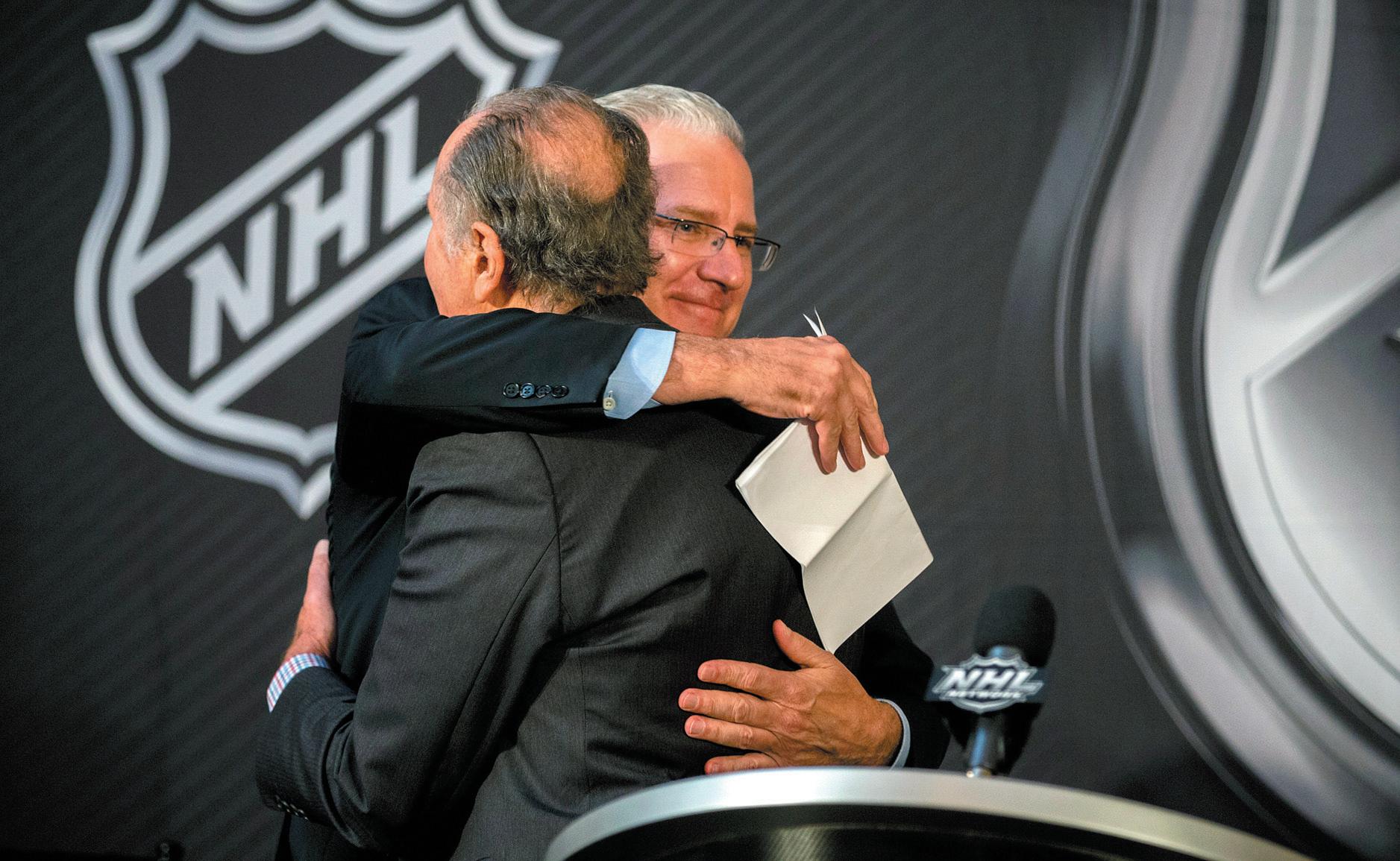
SEA ISLAND, Ga. — Seattle’s NHL dream is finally a reality.
The city will just have to wait a little longer than originally planned for its new team to hit the ice.
NHL commissioner Gary Bettman confirmed hockey’s worst-kept secret Tuesday, announcing the league will expand to Seattle at a packed news conference.
The NHL’s 32nd team, which was unanimously approved in a vote by the board of governors, will begin play in 2021-22 at a renovated and renamed KeyArena.
Seattle’s ownership group led by billionaire David Bonderman and a number of minority partners, including Hollywood producer Jerry Bruckheimer, is paying US$650 million to join the exclusive club.
“The league’s expansion decision was only made possible because Seattle will possess the three pillars essential to the success of any franchise: terrific, committed ownership, a thriving market and a state-ofthe-art venue,” Bettman said.
It was initially hoped the team would begin play in 2020, but concerns from the NHL that the franchise’s home – which will be known as Seattle Center Arena – won’t be ready in time pushed the start date back 12 months.
“I have business cards I’m going to have to toss out that say Seattle 2020,” joked team president and CEO Tod Leiweke, who said he expects the venue open in March or April 2021. “Waiting a little longer seemed to make a lot of sense and we ultimately agreed with the league.”
Seattle’s expansion fee is $150 million more than what the Vegas Golden Knights
paid when they joined the NHL in 2016.
“I never talk about personal finances,” Bonderman said of the price tag. “But this is a few bits of change which aren’t around anymore.”
While the U.S. Pacific Northwest has little recent hockey history at the professional level, the Seattle Metropolitans were the first American team to win the Stanley Cup, defeating the Montreal Canadiens in 1917.
The Metropolitans, who were formed by Hall of Fame brother Frank and Lester Patrick, played in the Pacific Coast Hockey Association before folding in 1924. There was also a failed attempt at NHL expansion to Seattle in the mid-1970s.
No announcement was made regarding what the new team will be called Tuesday, but Bettman seemed to pour water on the Metropolitans being in the running because the league already has a division with that name.
But whatever name the club goes by, Leiweke is convinced the venture will succeed.
“I remember sharing with Gary Bettman years ago that I thought Seattle could be an incredible market for the NHL,” Leiweke said. “It’s now up to us to deliver the championship team these fans deserve.”
Seattle will play in the Pacific Division, meaning the Arizona Coyotes will move to the Central. The league’s most recent addition gives the NHL an even 16 franchises in the Eastern and Western conferences and will provide the Vancouver Canucks a natural geographic rival.
“I don’t want to stoke the flames here because those guys are my friends, but bring it on, we can’t wait,” Leiweke said.
“That might be the one night I walk into the locker-room and say to the boys, ‘Give it
a little more tonight.”’
Viewed as a slam dunk ahead of the vote at this posh resort on Georgia’s coast, expansion to Seattle – the largest U.S. market without an NHL or NBA team prior to today’s announcement – required 75 per cent approval, in this case a thumbs up from 24 of 31 owners, to pass.
“I never felt it was preordained,” Leiweke cautioned. “This has been a real journey that’s had challenges.
“It’s not been for the faint of heart.”
The expansion fee will be divided between 30 NHL teams, meaning a cut of more that $21 million per club. Vegas does not get any of the money and is exempt from the expansion draft, which will take place in June 2021.
“I love Seattle,” Bonderman said.
“I went to school (there) ... I worked on the Space Needle in 1962. So what goes around comes around.
“If it was someplace else, I wouldn’t have done it.”
The NHL board’s nine-member executive committee recommended proceeding with the expansion application in October after a presentation that included Bonderman, Bruckheimer and Leiweke.
“We were very optimistic going into the process that this would work out the way it did,” deputy commissioner Bill Daly said.
“As we went through application process and got more and more information and did our due diligence process on the Seattle market, it certainly became even more attractive.”
Bruckheimer said the arena was always the main issue for the league when it came to Seattle’s start date, not the potential for another NHL work stoppage – a third since
2004-05 – that could come in the fall of 2020.
“They’ve always felt that we should have a little more time to build the arena right,” Bruckheimer said. “We wanted to bring it to 2020-21 because we want to get going right away. “But it’s not fair to the fans or to the players to not have a 100-per-cent finished arena when we start.”
The only winter professional sports franchise in the city, Seattle’s hockey team joins a crowded landscape that includes the NFL’s Seahawks, MLB’s Mariners and the Sounders of Major League Soccer. KeyArena, which was home to the NBA’s SuperSonics before they moved to Oklahoma City in 2008, is primed to undergo a massive $800-million renovation, up from the previously stated $700 million. Oak View Group, which will redevelop and manage the facility, is run by Leiweke’s brother Tim, who used to head Maple Leaf Sports and Entertainment in Toronto.
A ground-breaking ceremony at KeyArena is scheduled for Wednesday and there are also plans for a $70-million practice facility in the Seattle’s north end. After the NHL said it would consider the potential ownership group’s expansion application at this time last year, a seasonticket drive to gauge interest resulted in a jaw-dropping 32,000 deposits in one day, including 10,000 purchased in the first 12 minutes.
“I’m holding in a lot of emotions,” Leiweke said. “I think about the fans. I woke up today thinking about the fans.
“Today is a great day for the fans and we owe them so much. That’s why today happened.”
Gemma KARSTENS-SMITH Citizen news service
VANCOUVER — Seattle’s new NHL team may seem like a natural foe for the Vancouver Canucks, but some in the hockey world say building a rivalry between the regional neighbours will take time.
Canucks owner Francesco Aquilini welcomed Tuesday’s news that the NHL board of governors unanimously approved a yet-tobe-named franchise in Seattle, set to start play in the 2021-22 season.
“Great to welcome Seattle to the NHL!” he tweeted. “I’ve got a feeling this will become a classic rivalry.”
But while the Emerald City is located just over 200 kilometres south of Vancouver, Canucks head coach Travis Green said rivalries aren’t solely based on where teams are located.
“They come from hard playoff series, going through battles and being battle tested against each other,” he said.
Vancouver defenceman Troy Stecher – who’s from Richmond, – also believes creating a grudge
between teams requires some history.
“I definitely think it could become something, but it’s going to take time,” he said, noting that a there’s already an intense competition in Major League Soccer between the Vancouver Whitecaps and their regional adversaries, the Seattle Sounders.
“You can’t just say it’s a rivalry. You’ve got to go through games, you’ve got to build that personality, you’ve got to have battles with guys on their teams. And I think that’s what creates it.”
Giving both Vancouver and Se-
attle fans an opportunity to drive to games in another market will be huge, Stecher said.
“I played at a college that had really good fans that would travel a ways,” said the University of North Dakota alum.
“So maybe this is a good step for the Canucks.”
Creating a new rivalry could be a boon for the Canucks business side, said Peter Tingling, a professor with Simon Fraser University’s Beedie School of Business in Burnaby.
“You want engaged fans and it will certainly be good from that
perspective,” he said, noting that it’s been a long time since Rogers Arena was regularly sold-out for hockey games.
Having a new team in the Pacific Division could also put pressure on the Canucks to perform both on and off the ice, he added.
The NHL’s last expansion team, the Vegas Golden Knights, upped the ante for competition and entertainment, making the Stanley Cup final in their first year in the league, and quickly gaining a reputation for over-thetop in-game experiences and fan engagement.



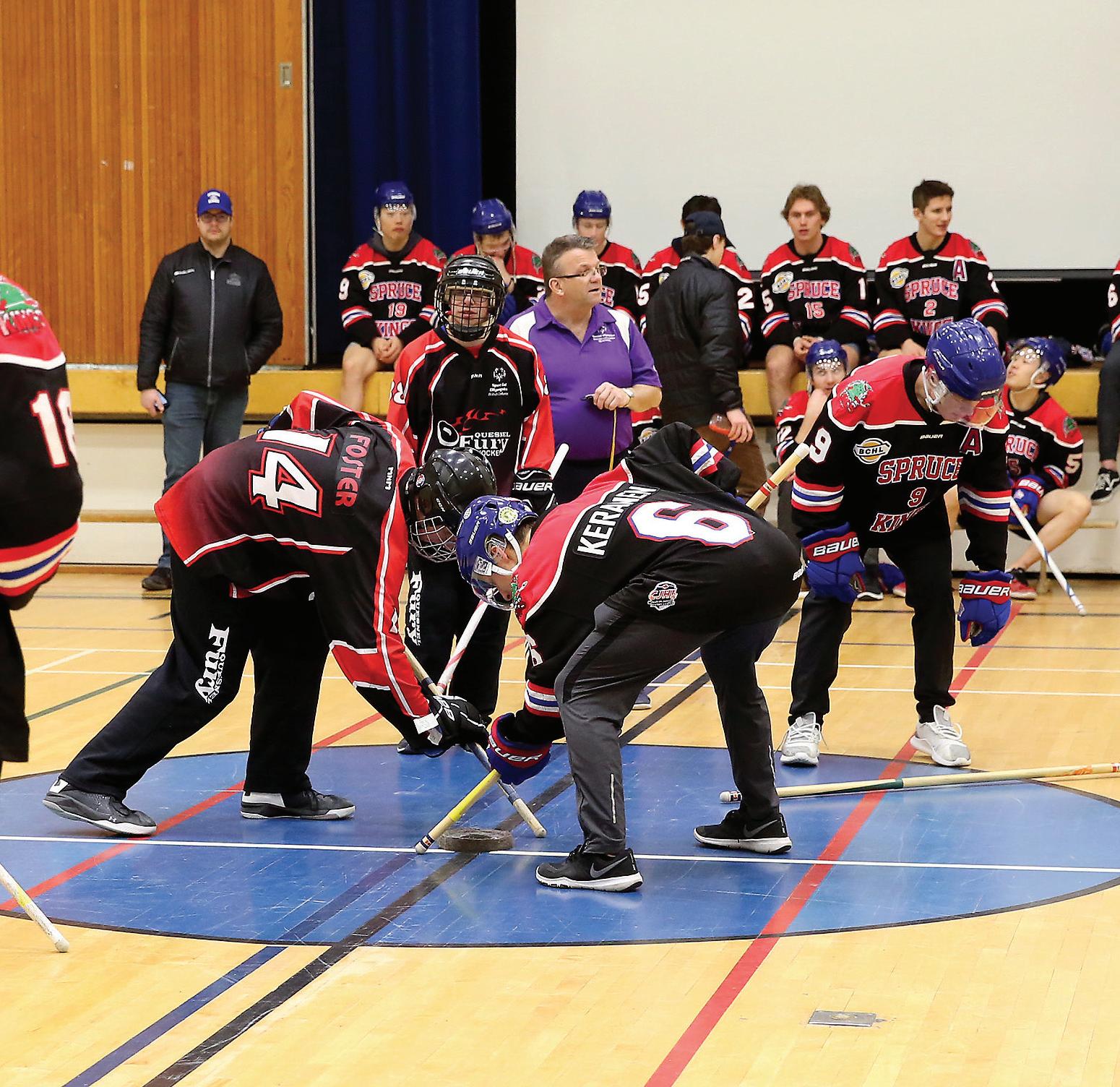
LEFT:
to a bit of cold weather,

John ZENOR Citizen news service
MONTGOMERY, Ala. — WBC heavyweight champion Deontay Wilder says he wants a rematch with Tyson Fury “ASAP.”
Wilder said in a conference call Tuesday that he’s “ready and willing to give Tyson Fury the opportunity ASAP.”
The two heavyweights fought to a splitdecision draw Saturday night in Los Angeles in one of the bigger heavyweight bouts in America in years.
“I’m ready whenever he’s ready,” Wilder said. “I’m ready whenever he’s ready to do it. I’m ready to give the fans what they want to see and end this talk once and for all.”
Afterward, the British challenger said the two would “100 per cent” meet again in the ring.
Wilder said he doesn’t want to fight anybody else before a rematch.
“Everyone is talking about this fight. It’s only right for us to go back in and do it again,” Wilder said.
“I don’t want any other fights to happen between him and I (meeting again).”
Wilder (40-0-1) knocked Fury (27-0-1) down twice late in the fight, including once in the final round. He was outboxed much of the way at Staples Center but was still surprised when Fury rose from that 12thround knockdown – and that the referee didn’t end the fight.
“I saw his eyes roll slowly in the back of his head,” Wilder said. “Many people felt that should have been waved off. Nine out of 10 refs would have waved that off.” He indicated the rematch might happen as early as March or April.
Showtime Sports president Stephen Espinoza said May or June might be more likely, giving the fighters more time to recover.
In the first meeting, Wilder said he let the pressure of being in his first pay-per-view fight affect him.
“I wanted to end it on a great note,” he said. “I wanted to end it on a devastating knockout and I pressed that. I pressed that too much.”
Wilder had lobbied for a fight with Anthony Joshua, who holds the other three championship belts.

KARSTENS-SMITH
Gemma
Citizen news service
VANCOUVER — A pair of goals from Jason Zucker led the Minnesota Wild to a 3-2 win over the Vancouver Canucks Tuesday night.
The victory snapped the Wild’s threegame losing streak and extended a slump that has seen the Canucks post a single win in their last 13 outings.
Zach Parise also scored for Minnesota (15-10-2).
Josh Leivo and Tyler Motte put up goals for Vancouver (11-15-3).
Devan Dubnyk made 29 saves for the Wild and Anders Nilsson stopped 25-of-28 shots for the Canucks.
Leivo put Vancouver on the board 7:02 into the game, scoring on his first-ever shot in a Canucks uniform.
He collected a pass from rookie Elias Pettersson in the slot and flipped it over Dubnyk’s blocker to open the scoring.
The 25-year-old left winger was dealt to Vancouver from the Toronto Maple Leafs on Monday in exchange for AHL forward Michael Carcone. Leivo had four goals and two assists in 27 appearances for the Leafs this season.
The Wild responded to Leivo’s goal by netting one of their own on the first power play of the night after Canucks defenceman Michael Del Zotto was called for tripping.
Just 15 seconds into the penalty, Matt Dumba took a hard shot from the top of the faceoff circle and Parise deflected the puck in past Nilsson to tie the game.
The Canucks were slow to start in the second frame, going more than eight minutes without registering a single shot.
Vancouver eventually found some fire and the back of the net.
Tim Schaller got the puck to Motte in front of the Wild’s net and the centreman swept it in past Dubnyk.
Minnesota rallied back with a pair of power-play goals less than a minute apart.
Canucks defenceman Alex Edler was first to the penalty box, getting called for interference. A minute later, Del Zotto got

caught cross-checking, handing the Wild a two-man advantage.
Minnesota was quick to capitalize with Ryan Suter taking a hard shot that Zucker tipped in.
Fifty-five seconds later, Zucker scored again, putting the Wild up 3-2.
Mikael Granlund had assists on both goals and is riding a three-game point streak.
Minnesota has 11 power-play goals in its
last 10 games.
Meanwhile, Vancouver has spent 325 minutes in the penalty box this year, more than any other team in the league. The Canucks’ penalty kill was ranked 23rd in the NHL going into Tuesday’s game.
The second period of the game closed with a scuffle after Canucks left-winger Jake Virtanen was nailed hard from behind along the end boards by the Wild’s Greg Pateryn.
Ted CLARKE Citizen staff
tclarke@pgcitizen.ca
As the sun rises today over the B.C. Hockey League the Prince George Spruce Kings are sitting on the highest cloud, in first place overall.
That might not be the case by the time they step out on the ice tonight at Rolling Mix Concrete Arena to face the Vernon Vipers. That’s because the Chilliwack Chiefs, who are just one point behind the Spruce Kings in second place in the Mainland Division will host the Langley Rivermen in an afternoon game that starts today at 2 p.m.
A win for the Chiefs (22-9-0-0) would allow them to temporarily leapfrog the Spruce Kings (21-8-12) into first overall and they could
stay there if the Kings falter on home ice tonight.
The Spruce Kings are also feeling heat from the Interior Divisionleading Penticton Vees (20-8-1-2), who are two points behind Prince George. The Chiefs and Vees have played one fewer game than Prince George.
The Vipers (11-10-6-3) have dropped to sixth place in the Interior. They made a deal with Prince George to acquire goalie Bradley Cooper, who will be back to visit his former teammates tonight. Cooper was dealt along with future considerations for winger Garrett Worth, who made his Spruce Kings debut last weekend, when they split a two-game series at RMCA with Langley.
The Spruce Kings will be without three of their top defencemen.
Layton Ahac and Nick Bochen are in Calgary attending the Team Canada West tryouts for the World Junior A Challenge, Dec. 9-16 in Bonnyville, Alta. They’ll also be missing Dylan Anhorn, who was invited to the Team Canada camp but is unavailable after he suffered a concussion during Saturday’s game against Langley.
The Vipers have two players at the Canada West tryouts – forward Alex Swetlikoff and defenceman Jack Judson.
The Spruce Kings, who have Logan Neaton and new arrival Keenan Rancier in net, have allowed just 69 goals in 32 games, averaging 2.16 per game, best in the BCHL. They are also the leastpenalized team with 285 penalty minutes, an average 8.90.
Game time tonight is 7 p.m.
Virtanen was slow to get up and left the ice leaning over on his stick for support. He returned to the game early in the third period. Pateryn was called for boarding. The Canucks out-shot the Wild in the third frame, but couldn’t get the puck past Dubnyk.
The Canucks wrap up a five-game homestand on Thursday when they host the Nashville Predators.
Kim TONG-HYUNG Citizen news service
SEOUL, Korea, Republic Of — A beleaguered South Korean curling official says he and his family will leave the sport for good as the government investigates their alleged abusive treatment of the “Garlic Girls,” the country’s hugely popular Olympic silver medallists . Former Korean Curling Federation vice-president Kim Kyung-doo said Tuesday he offers a “sincere apology” to the athletes and also for causing “great disappointment” to the public.
Kim admitted to accusations that he verbally abused members of the team, saying he had been “unskilled” in expression.
However, Kim has been denying more serious accusations, including holding back donations and prize money from the team. Kim’s statement was sent to reporters hours before the Sports Ministry decided to extend its inquiry into the allegations by two weeks until Dec. 21 to look deeper into the suspicion of financial wrongdoings.
Kim and his family had extensive control over the team with his daughter, Kim Min-jung, being the head coach and her husband the mixed doubles coach. “We dedicated ourselves to curling for 25 years, sacrificing our family and friends for the development of the sport,” Kim said in the statement. “But it was our great failure that we were unable to look around and properly consider those around us.”




BUSINESS OPPORTUNITY


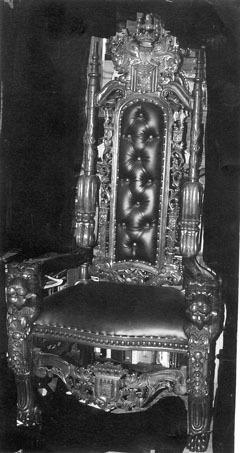
Established Franchise Tax Preparation BusinessMackenzieservicing and McLeod Lake area for over 30 years.
Gross Revenues of $85,000 to $90,000
Annually and Potential to expand revenues in a growing economy.
Transition support available for the right buyer.
Serious Inquires Only Office (250)997-9003 Home (250)997-5538 Cell (250)990-0152
BUSINESS OPPORTUNITY
Established Franchise Photography Business Serving Northern B.C for over 35 years
Gross Revenues of $150.000 plus annually from seasonal work Lots of opportunity to expand the business.
Transition support available to the right buyer
Serious Enquiries Only Office 250-596-9199 Cell 250-981-1472

ANDREW BRADLEY
Born Draperstown, Co. Derry N. Eire UK 1943 6 September Died Prince George, BC Canada 2018 17 October
AL SHUMEY
Born November 12, 1931

With heavy hearts and profound sadness we announce that our beloved and devoted husband, father, grandfather and great grandfather passed away peacefully at home surrounded by his family. Survived by his loving wife June, son Abbie (Linda), daughter Denice (Mike), grandchildren Tamara, Mandy, Colin, Mathew, Andrew, Ben, great grandchildren Sydney and Lauren.
Dad loved family times playing cards and games, as well as golfing with the boys. We will all miss his great sense of humor.
Special thank you to Drs. Geddes & Attia and Dr. Appleby & Nurse Erica for their compassionate care. In lieu of flowers, donations can be made to the Cancer Society. No service by request.
RUSSELL SAMUEL
STOOKSBERRY
January 26, 1935December 4, 2018
It is with heavy hearts, and profound grief, we announce the passing of Russell Stooksberry, at the age of 83 years.

“Rusty” has departed this Earth to go well drilling in faraway places. Rusty leaves behind his beloved wife and soul mate, Carole of 54 years; sons Guy (Leanne) P.G., John (Denise), Calif;’ Todd, Oregon; daughters Linda (Mike) Idaho; Tina, Oregon; Toni (Hans), Oregon; stepsons Gary (Tammi), Oregon; Craig (Robin), Calgary, AB. Also survived by several grandchildren, especially his two right-hand men, Scott (Laura) and Jesse (Evelyn), as well as numerous great grandchildren, extended family members and friends.
Our heartfelt thanks and appreciation to Dr. Khan, Dr. Carter; the nursing staff of UHNBC - FMU-POD-C and with deepest gratitude for Audrey, a beacon of light and encouragement in our darkest hours. No funeral by request. A Celebration of Life to be announced at a future time. The Stooksberry Family
As the family of the late Larry Norbeck we would like to express our deep appreciation for all the support and caring given to us when Larry passed away - the phone calls - the food - the beautiful cards - the flowers - the hugs - the offers of help - all the people that came from in town and out of town, to the celebration of life for Larry - all of it - Larry’s heart would have been deeply touched by your presence and your caring. - Our hearts are deeply touched by your kindness and caring - it helps to carry us through this terrible, difficult and sad, sad time. Thank you all from the bottom of our hearts.
Joan, Dana (Andy) Koewen, Brendyn

SENIOROFFICEADMINISTRATOR
Joinourteam!Thesuccessfulcandidatewillhavea minimumof5yearsofficeandfullcyclebookkeeping experience,andbeabletopassawrittenand practicaltest.NDTofficeexperienceanasset.Email orcalltorequestadetailedjobdescription. Call:236-423-0447Email:office@horizontesting.ca


















































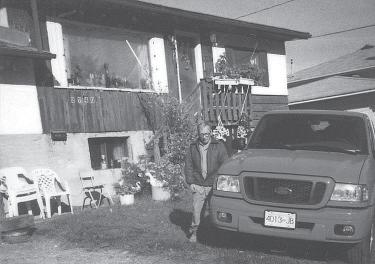



















RuralResidentialpurposessituatedonProvincialCrown landlocatedinthevicinityofBearLake,describedasLot 3,DistrictLot292,CaribooDistrict,Plan28931. TheLandsfileforthisapplicationis7402313.Written commentsconcerningthisapplicationshouldbe directedtoSusanSpears,LandOfficer,OminecaRegion, FLNRORD,at5thfloor,499GeorgeStreetPrince George,BCV2L1R5orSusan.Spears@gov.bc.ca. CommentswillbereceivedbyFLNRORDupto2018-1227.FLNRORDmaynotbeabletoconsidercomments receivedafterthisdate. Pleasevisitthewebsiteat http://arfd.gov.bc.ca/ApplicationPosting/Index.jspfor moreinformation.Beadvisedthatanyresponsetothis advertisementwillbeconsideredpartofthepublic record.Accesstotheserecordsrequiresthesubmission ofaFreedomofInformation(FOI)request.Visit http://www.gov.bc.ca/freedomofinformationtolearn moreaboutFOI. Ahardcopymapshowingthelocationandextentofthe applicationareamaybeacquiredbycallingtheland officernamedaboveat(250)561-3479.





Citizen news service
It was mid-summer, less than three months before Canada legalized recreational marijuana, and Vic Neufeld had a problem.
The chief executive officer of Aphria Inc. had just hired 50 people to work in the pot producer’s greenhouse in Leamington, Ont. and by the end of the first week all but eight had quit.
“Those are really hot, humid months and working in a greenhouse, as much cooling and airflow as we can provide, is still pretty darn hot in July and August,” Neufeld said.
A lack of qualified local labour forced Aphria to dispose of almost 14,000 cannabis plants in the quarter ended Aug. 31 after they weren’t harvested in time, costing it nearly $1 million.
Since then, the company has doubled the staff at its Aphria One greenhouse thanks in part to Canada’s Seasonal Agriculture Worker Program, which has allowed it to hire about 50 tempo-
rary workers from the Caribbean and Guatemala with plans to bring in up to 100 more.
Aphria’s experience underscores the swelling demand for labour in Canada’s five-year-old cannabis sector, where openings have tripled in the past year to 34 out of every 10,000 job postings, according to employment search engine Indeed.com
Canada’s licensed producers employed about 2,400 workers at the end of 2017, according to Statistics Canada, and BMO Capital Markets estimated that industry employment was around 3,500 people when legalization took effect in mid-October.
Between them, eight of Canada’s largest cannabis companies are now actively recruiting for approximately 1,700 positions, according to data compiled by Bloomberg. Many companies say they expect that number to grow as they expand production facilities after Canada legalized recreational marijuana in October.
There’s been a spike in postings

for jobs at cannabis growers and retailers. And next year will see even more demand for labor as Canada expands the number of legal cannabis products to include edibles and concentrates, said Alison McMahon, founder and CEO of Cannabis At Work, a recruitment and training site.
“We’re going to see a lot of R&D positions and a lot of sciencebased positions around extraction and formulations,” McMahon said, estimating that the industry could create around 125,000 jobs in the first year after legalization.
Increasing automation will also likely accelerate the shift toward more high-tech jobs in the industry away from more manual jobs. That would follow the pattern of traditional sectors such as the auto industry, where blue-collar manufacturing jobs have been disappearing as companies ramp up spending on research and engineering.
Aurora Cannabis Inc. has grown to 1,700 employees worldwide from 35 when chief corporate of-
ficer Cam Battley joined the company in March 2016, Battley said.
The Edmonton-based company currently has about 140 openings and is bringing 60 new employees on board each month.
There’s plenty of interested candidates, with Aurora getting between 200 to thousands of applications for each posting.
Competition for workers is fierce, with Canada’s jobless rate at a four-decades low of 5.8 per cent.
“We’re bringing in people from mature industries who probably wouldn’t have considered a career in the cannabis business two years ago,” Battley said. “We’ve got people coming in from the logistics business, we’ve got people coming in from agriculture and different sciences, we’ve got people coming in from oil and gas.”
The latter industry is suffering from the slump in Canadian crude prices, which fell to a record low in November.
“There’s no question that we’ve been one of the bright lights in the Alberta economy,” Battley said.
Citizen news service
Two private cannabis retailers are looking to enter the market in Fort St. John, while the province seeks a location to open a B.C. Cannabis store.
Glory Cannabis Company is looking to open on 100 Street.
The city has issued public notice seeking comment from nearby residents and businesses within a 0.8-kilometre radius until Jan. 4.
The company has already soft launched online and on social media, and bills itself as a family-owned and operated retailer based in Fort St. John.
The company is led by Sheldon James and David Tran, both of whom live in Fort St. John, according to a company profile.
“We’re looking to make a big stand here in Fort St. John,” James said in an interview.
“It’s not about recreational cannabis for me. I don’t call it that, we like to call it nonmedical cannabis, in the sense that this is not necessarily being given to somebody who is a patient... but given to people who
need it, who need general access to it, people who want to use it, to enjoy their time because cannabis is such a versatile plant. It really has so many uses and people don’t know about it. It’s such a taboo.”
HIVE Cannabis is looking to set up shop at 9909 100 Avenue.
Meanwhile, the B.C. government is looking for space for a BC Cannabis store.
Each private cannabis retail application is sent from the province to the city, where it is subject to public comment and an internal review by planning and bylaw staff, as well as RCMP.
From there, staff make a report and recommendation for council approval.
Council’s decision will be sent back to the province, which will determine whether to issue the company a retail licence.
A report on HIVE Cannabis is slated for the Dec. 10 council meeting. The city did not receive any public feedback, officials say. The province’s application, once submitted, will only go through an internal review process by the city.

markets plummeted Tuesday as a bond market move
a potential recession ahead, prompting declines in the
and financial sectors. The yield on two- and threeyear Treasury notes surpassed five-year notes in a partial yield curve inversion that often portends a recession in the years to come, says Craig Jerusalim, portfolio manager at CIBC Asset Management. In addition, the two and 10-year Treasury note shrank to their narrowest range since 2007. Historically, an inversion of those notes typically occurs six to 12 months ahead of a recession.
In addition, markets fell on a dampening of enthusiasm on a China-U.S. trade deal following comments from both sides and ongoing noise about Brexit, Jerusalim added.
The S&P/TSX composite index suffered the largest daily loss in six weeks as it closed down 211.39 points to 15,063.59. All sectors but telecommunications and utilities fell, led by a 4.59 per cent drop by health care, followed by industrials, energy, technology, consumer discretionary and financials. Health care dropped as Aphria Inc. shares fell by another 21 per cent in the wake of a short-sellers’ report that targeted its recent Latin American acquisitions and raised questions about its operations in the region. Despite strong quarterly results, BMO shares dropped when the bank didn’t achieve its operating level targets.
Meanwhile, Teck Resources Ltd. gained 2.1 per cent after selling a stake in its Chilean copper mine project that will allow the Vancouver company to remain cash flow positive.
Also partially offsetting the declines on the TSX were higher prices for oil and gold.
The January crude contract was up 30 cents at US$53.25 per barrel and the January natural gas contract was up 11.8 cents at US$4.46 per mmBTU.
The February gold contract was up US$7.00 at US$1,246.60 an ounce and the March copper contract was down 5.05 cents at US$2.76 a pound.
The Canadian dollar traded at an average of 75.65 cents US compared with an average of 75.81 cents